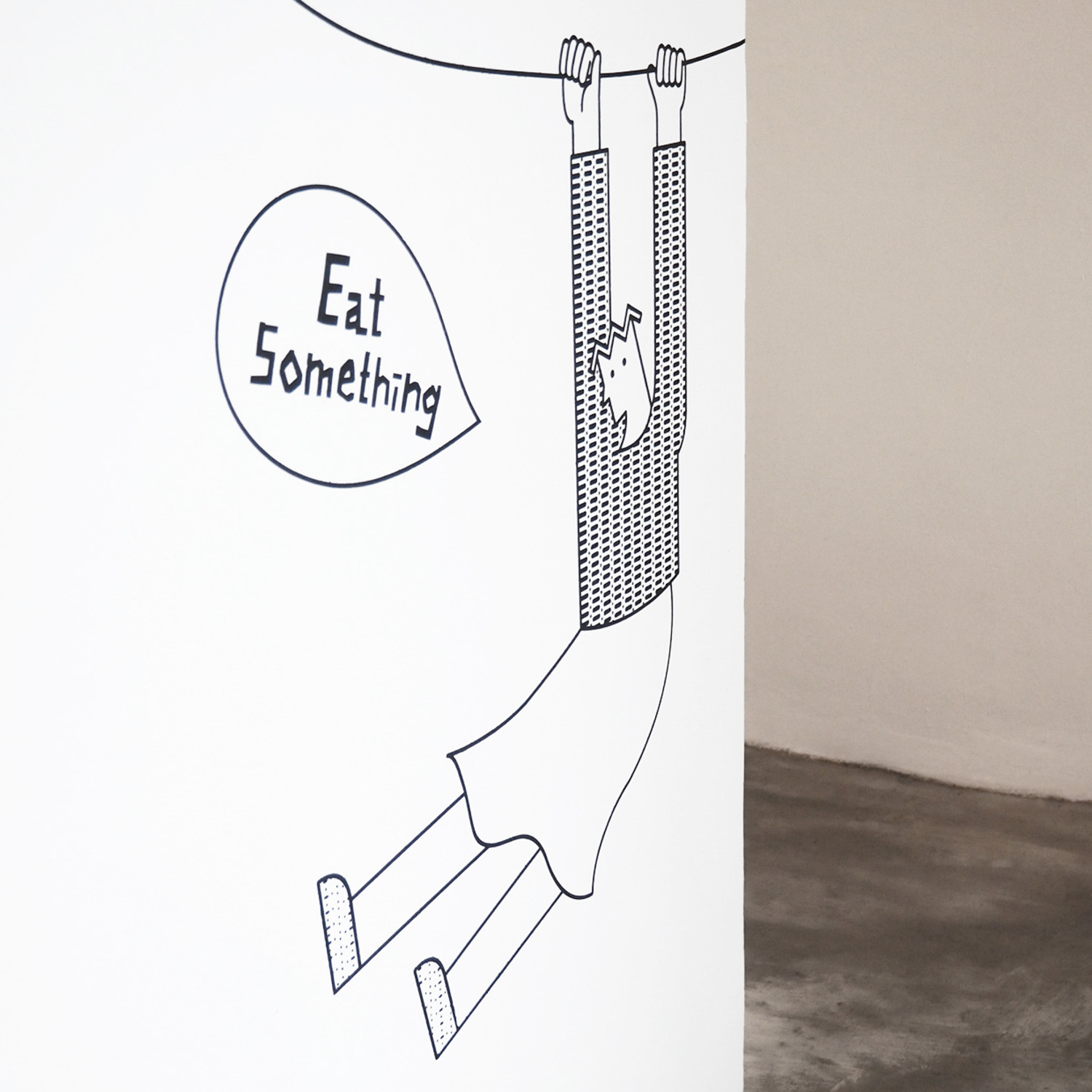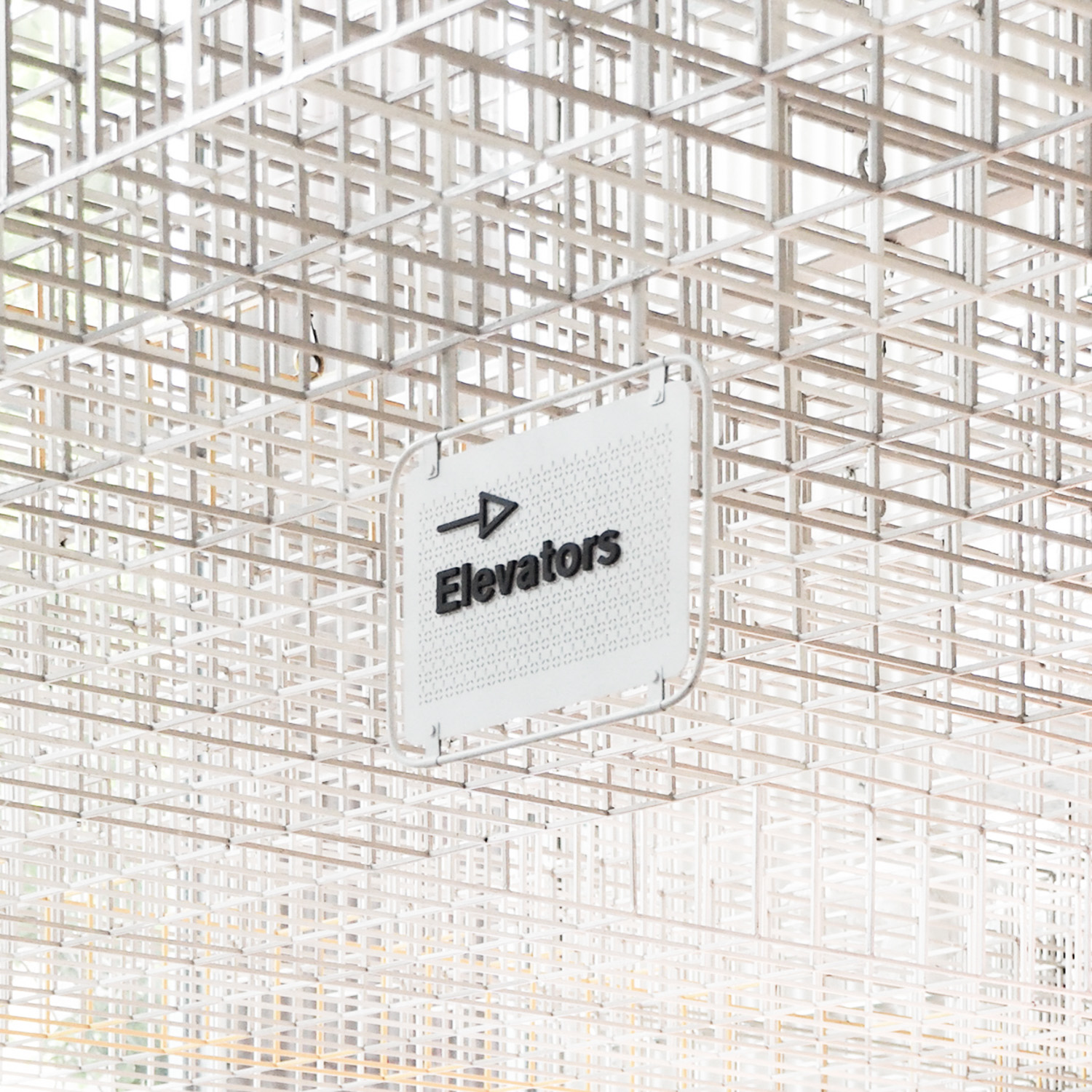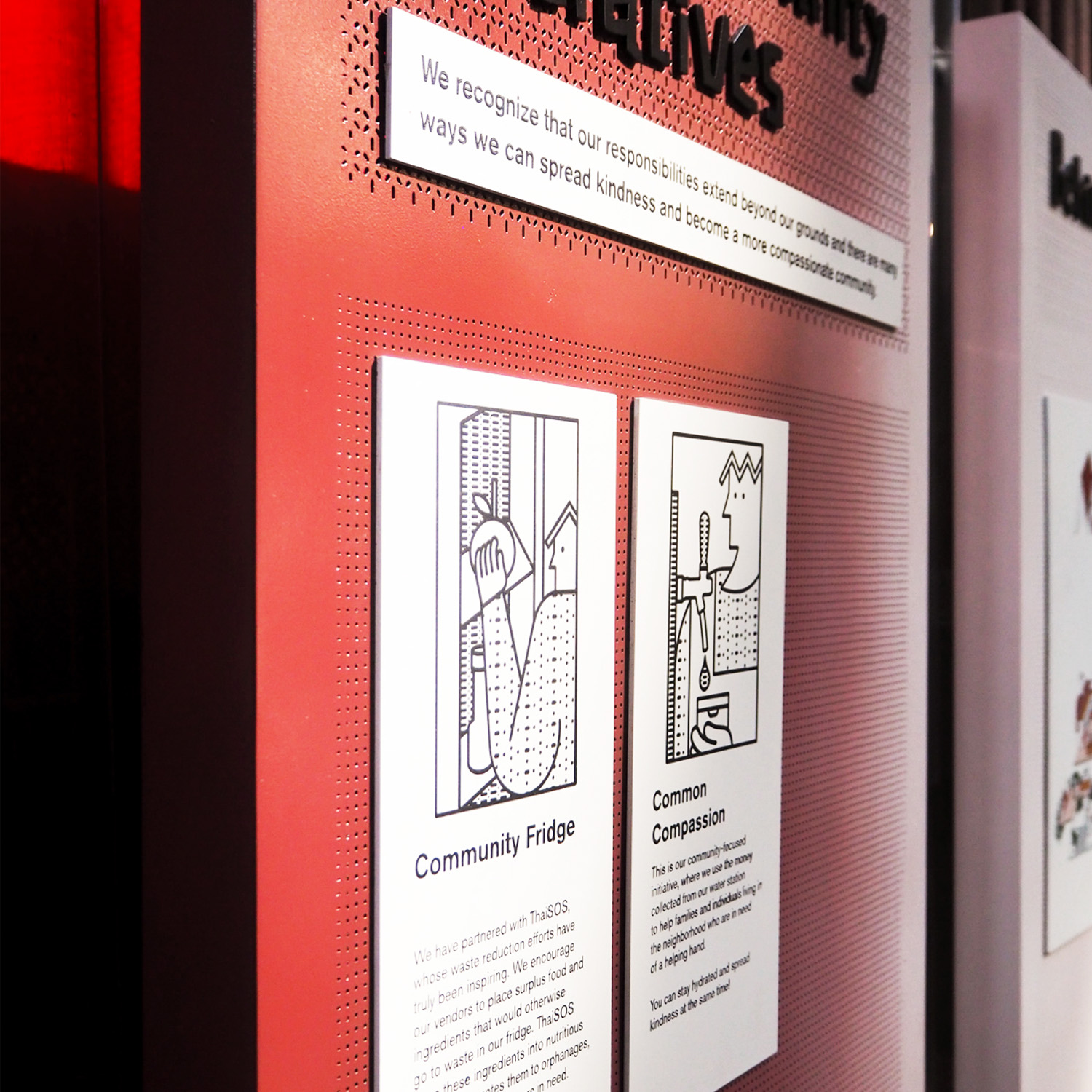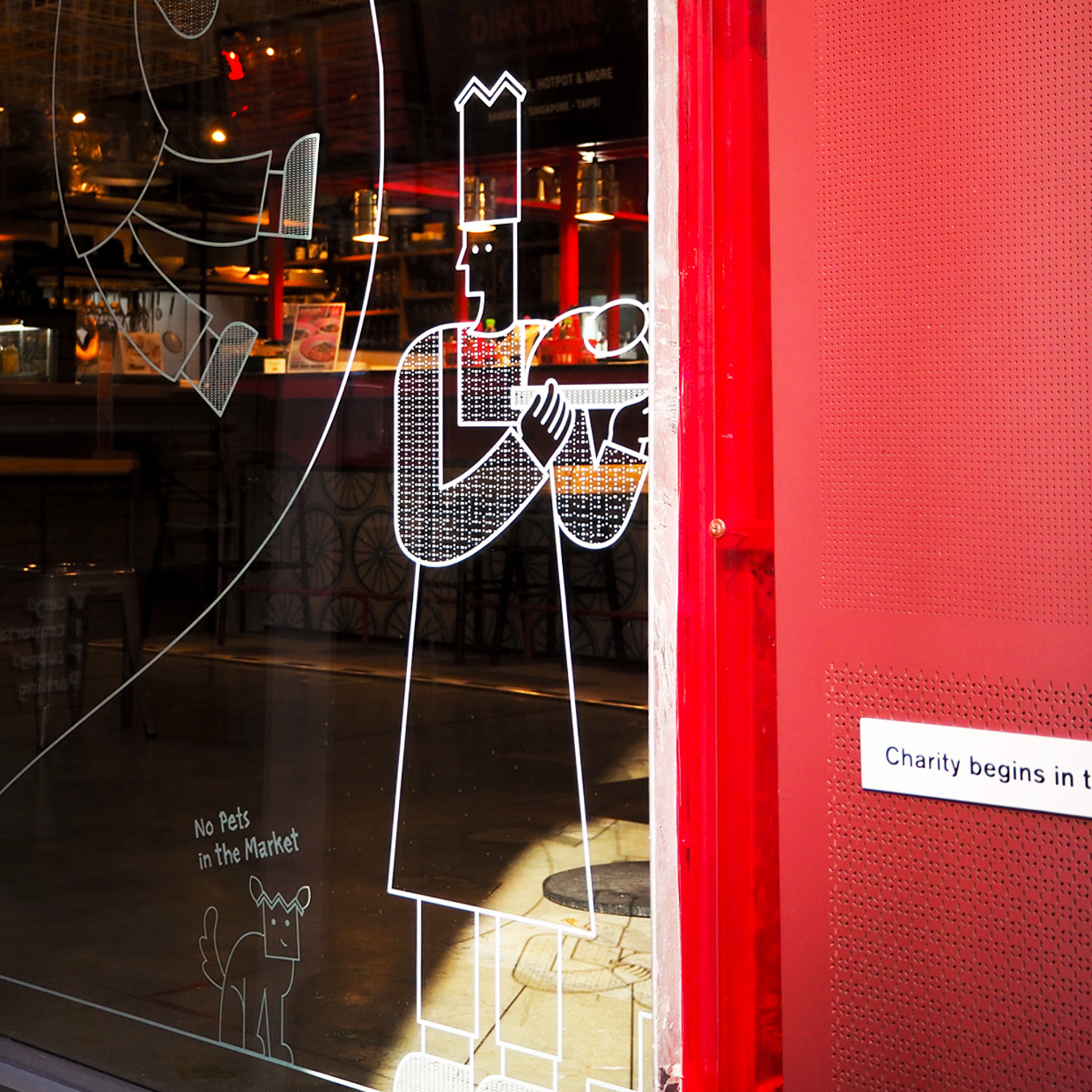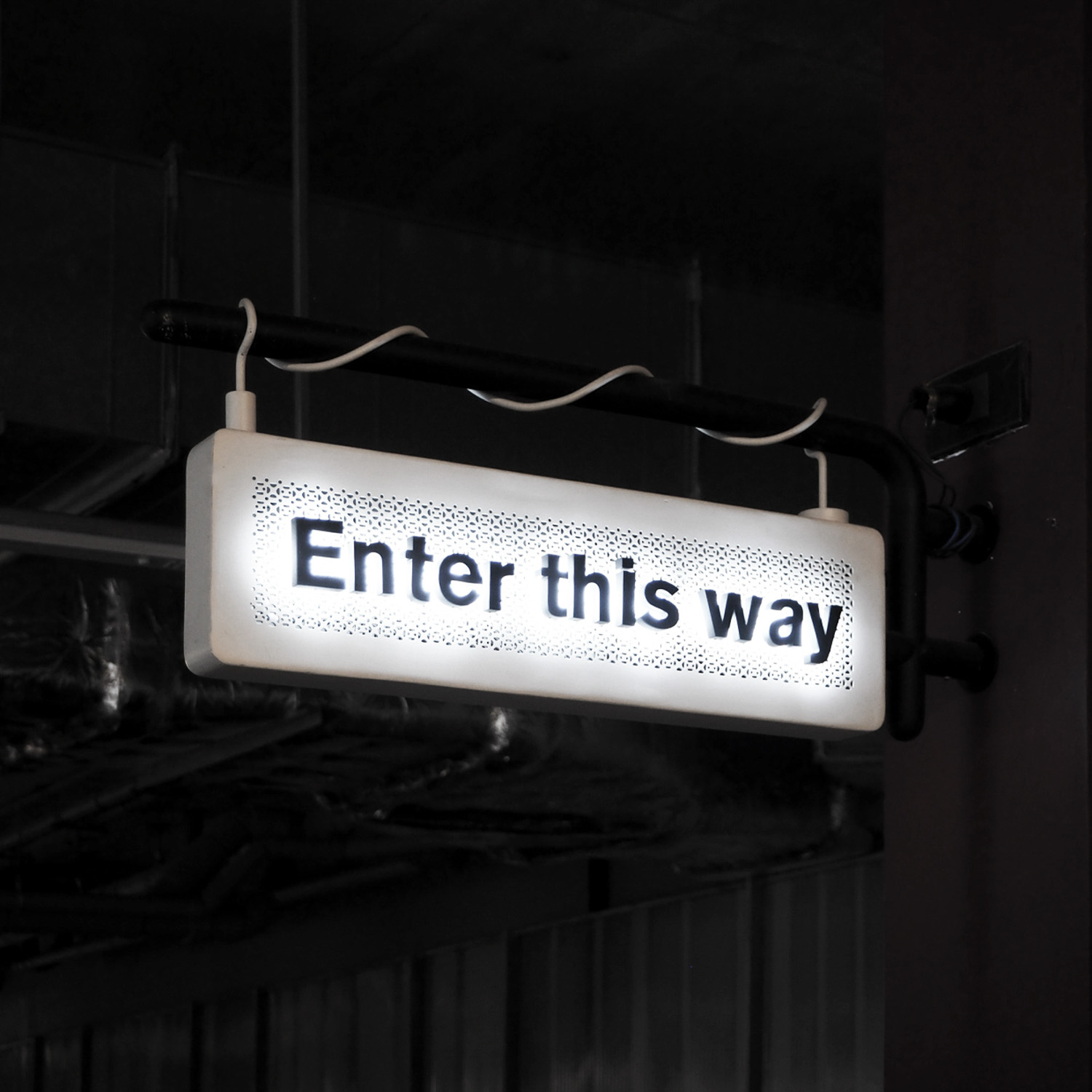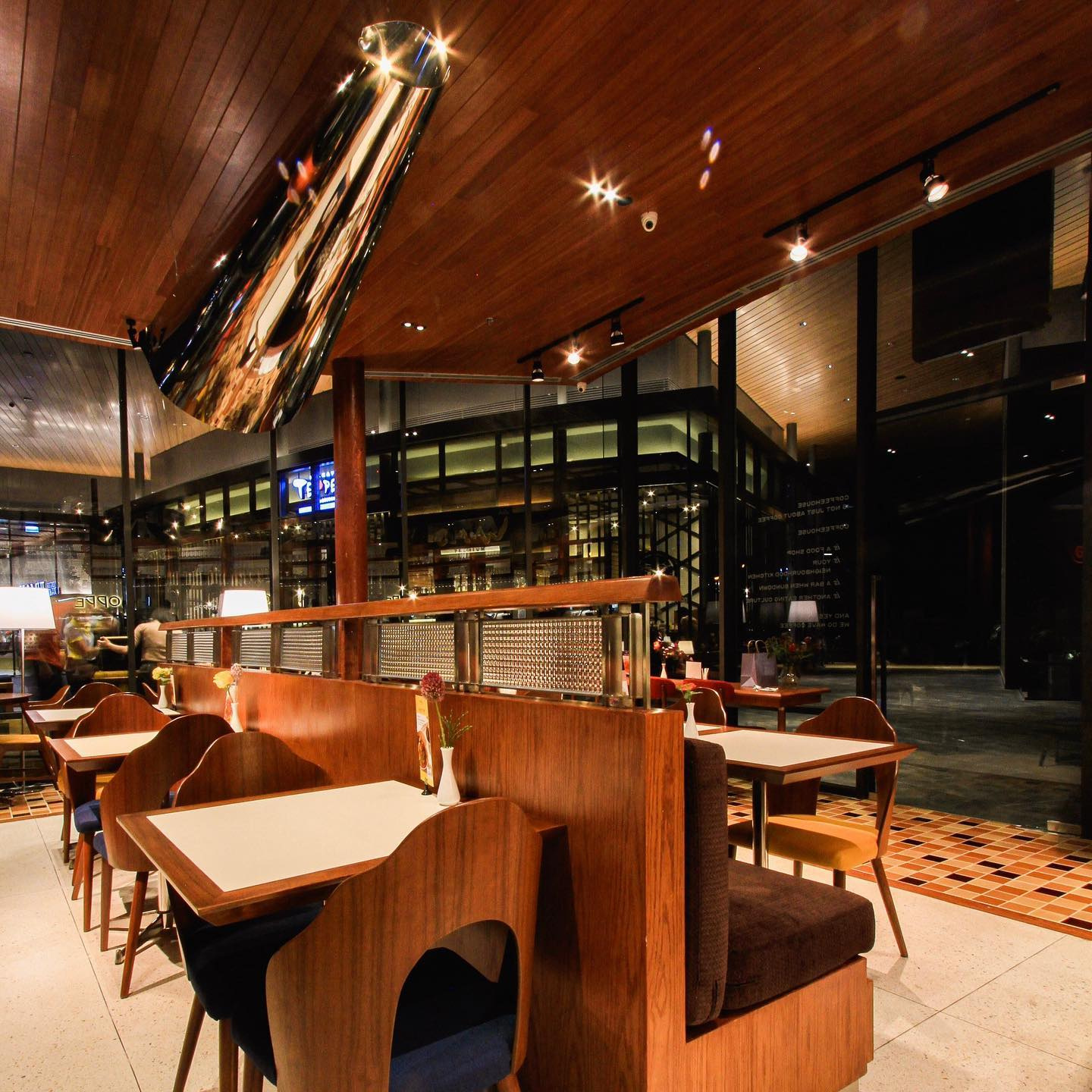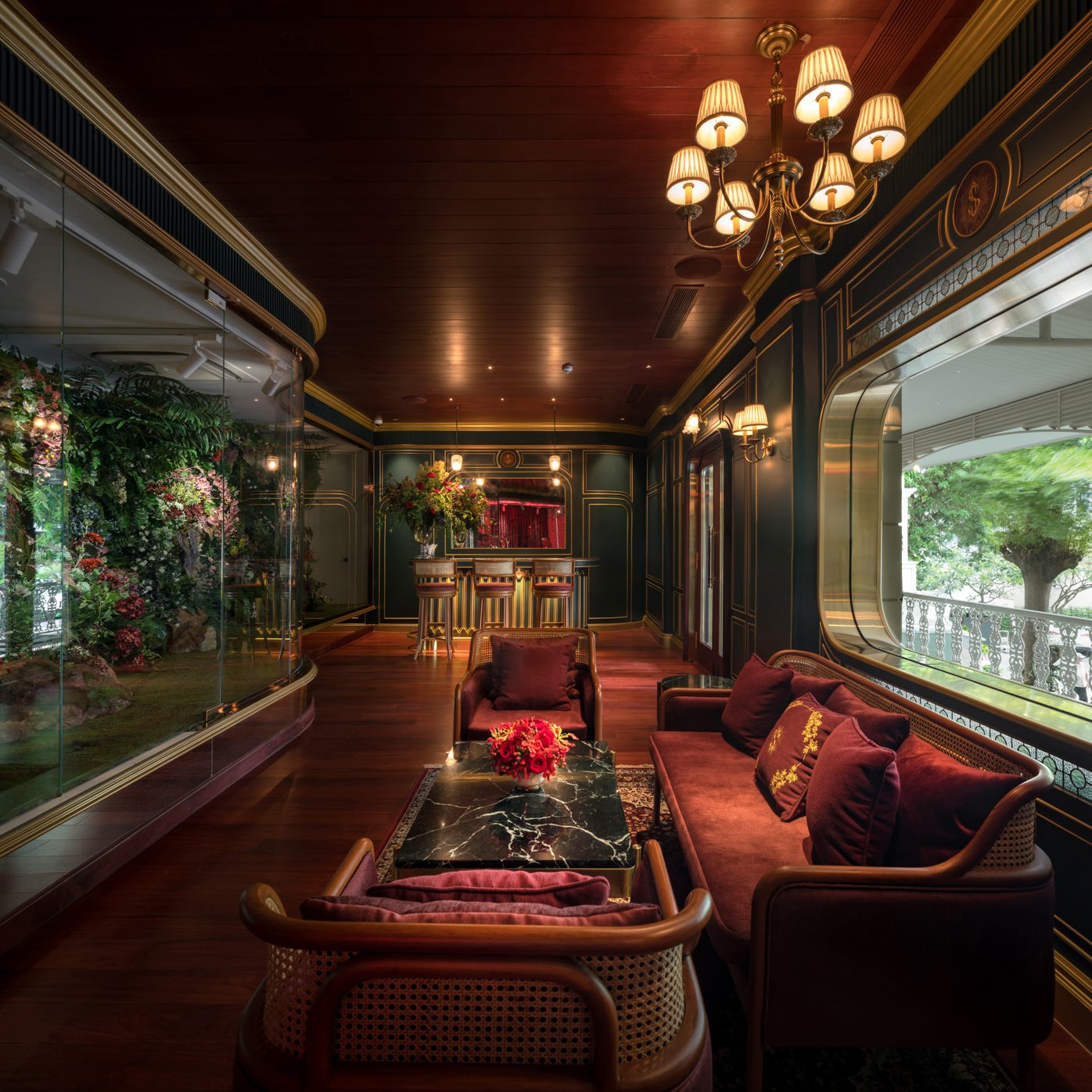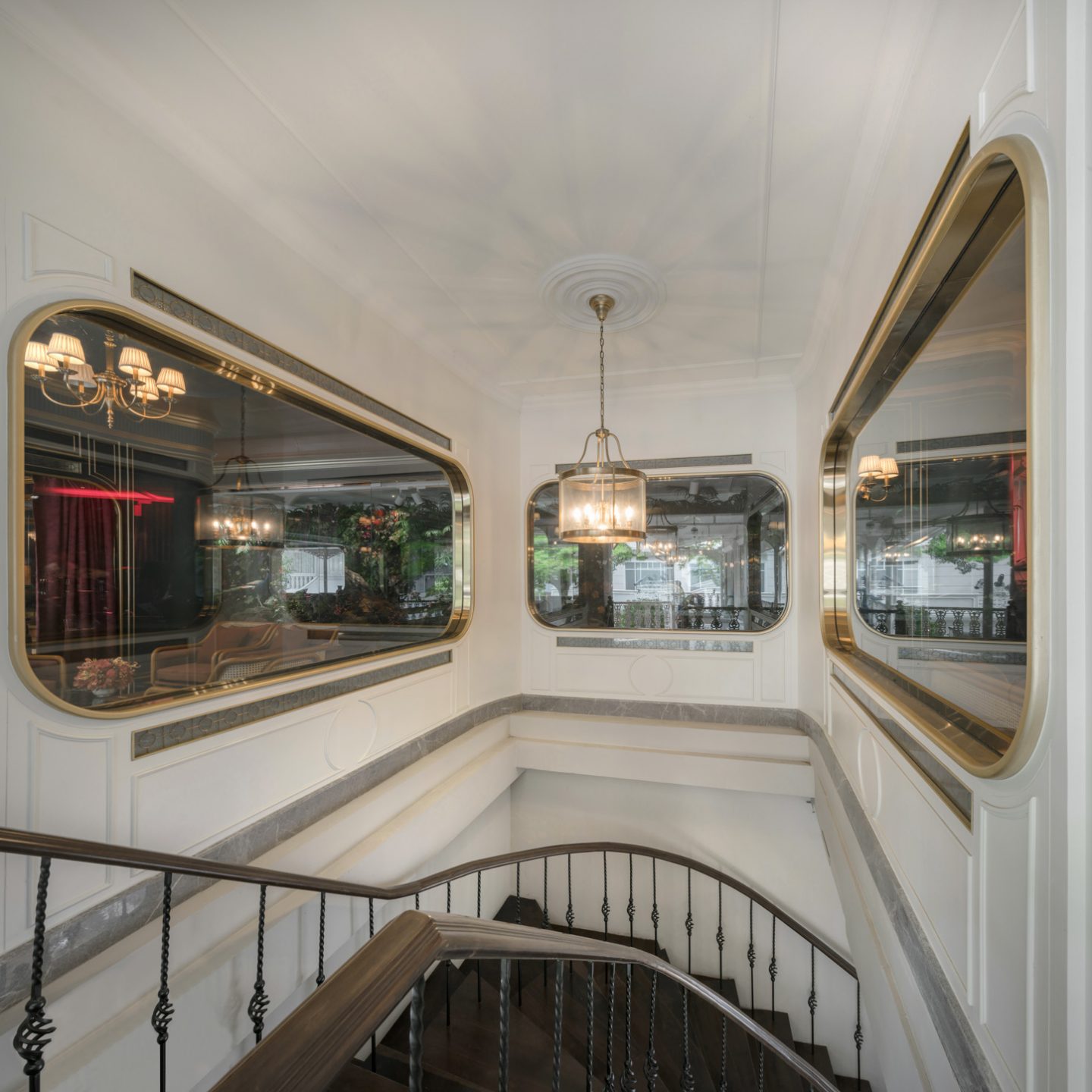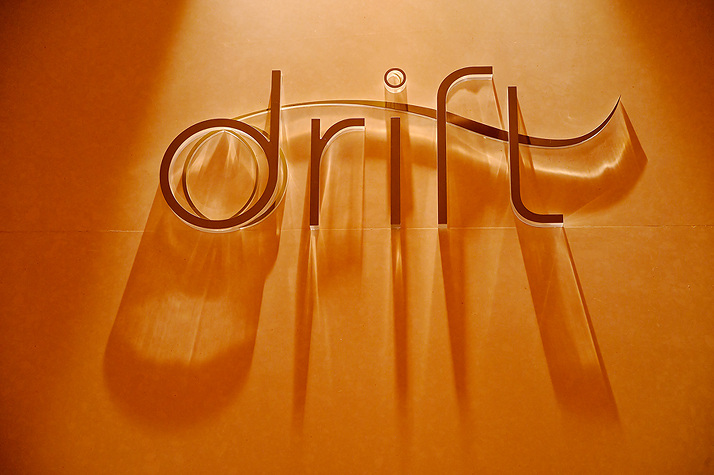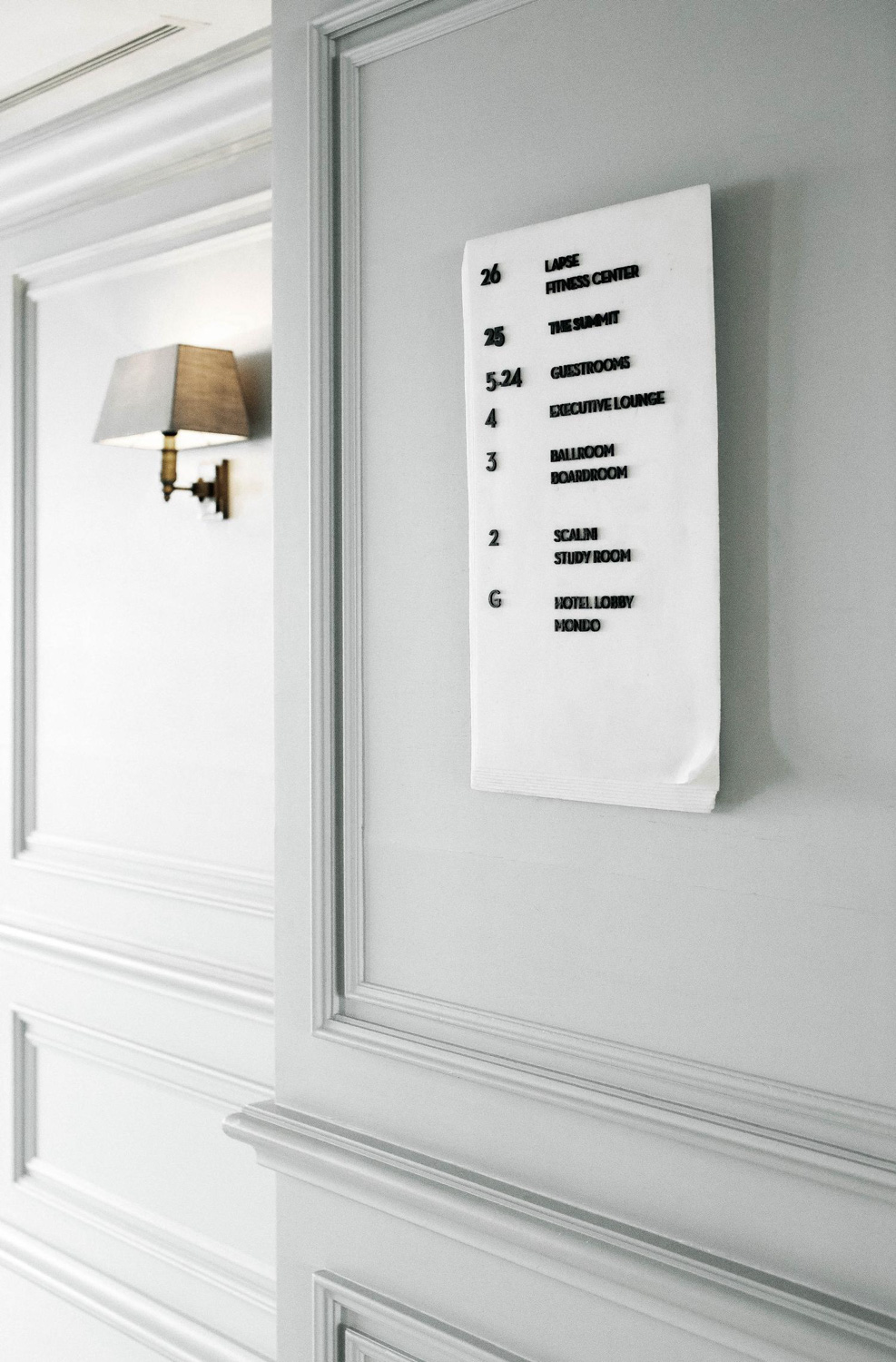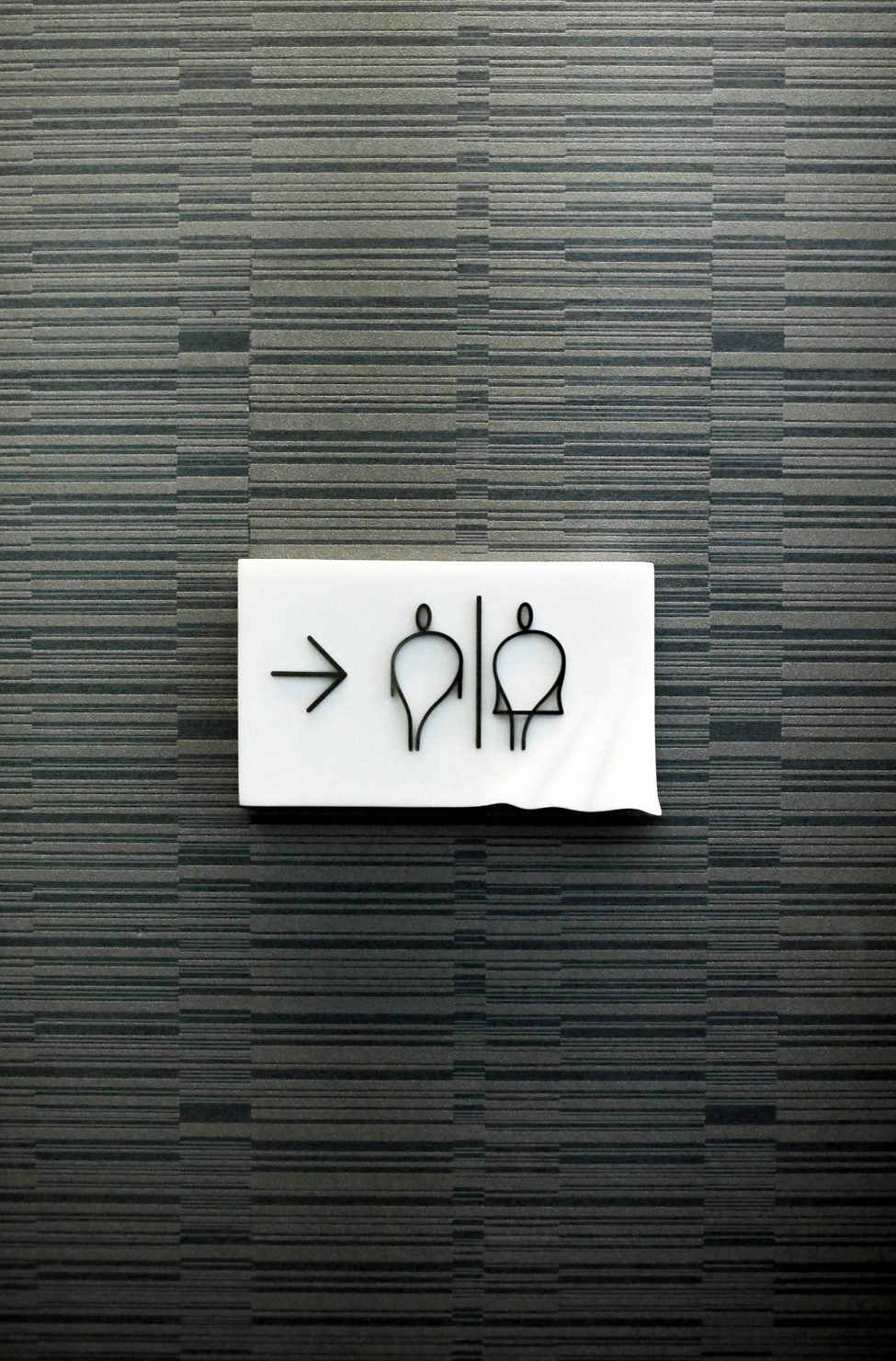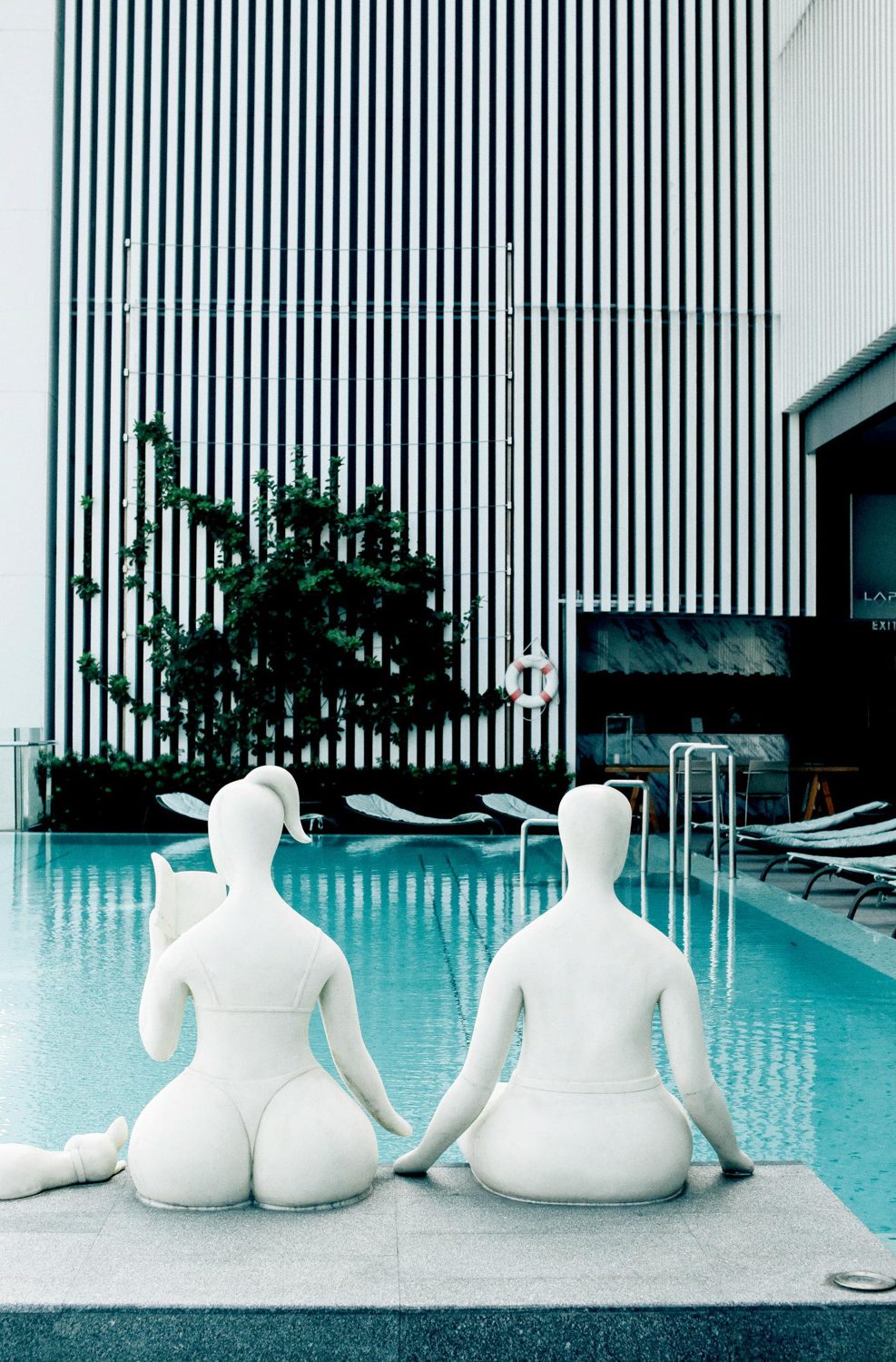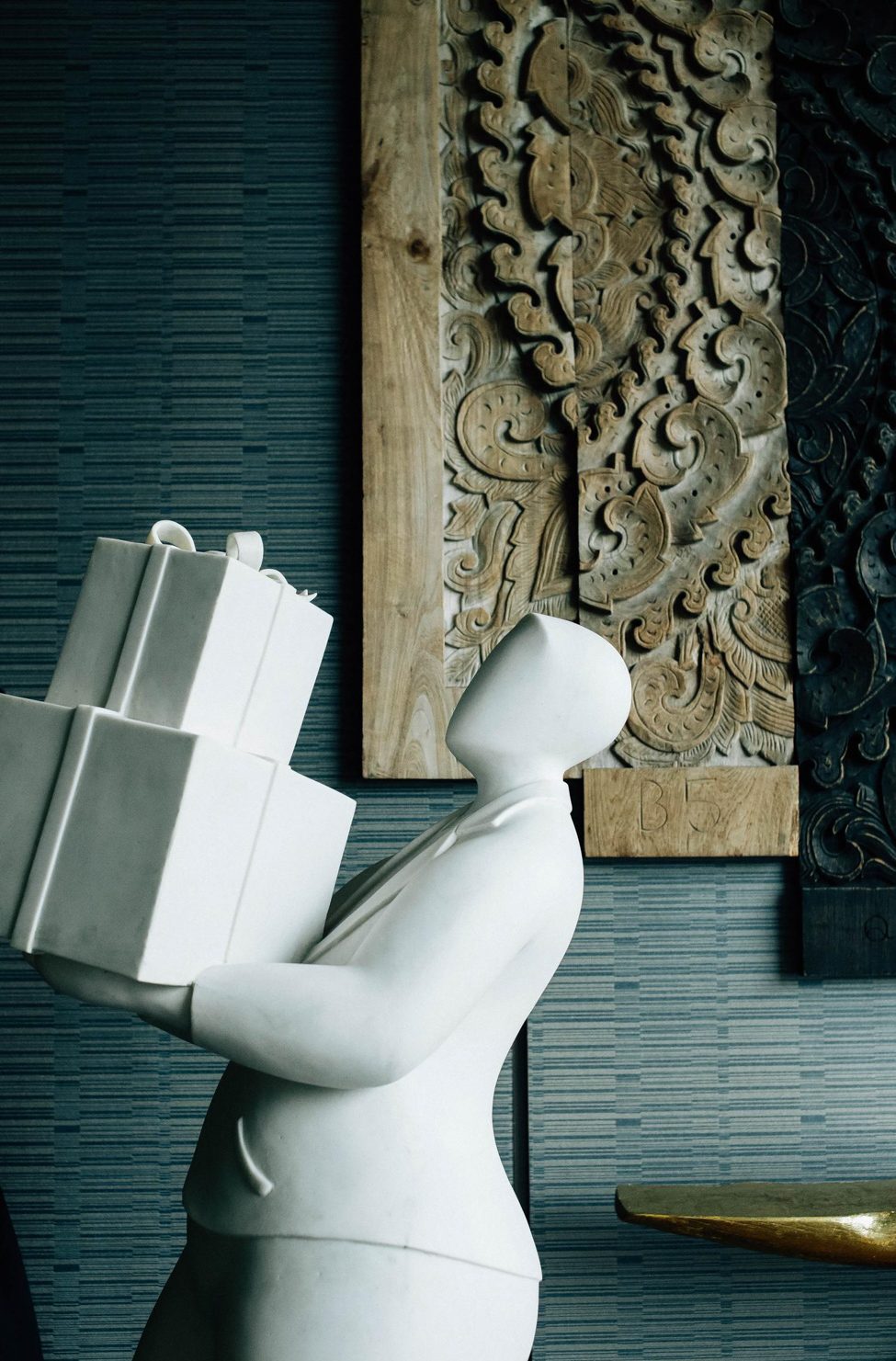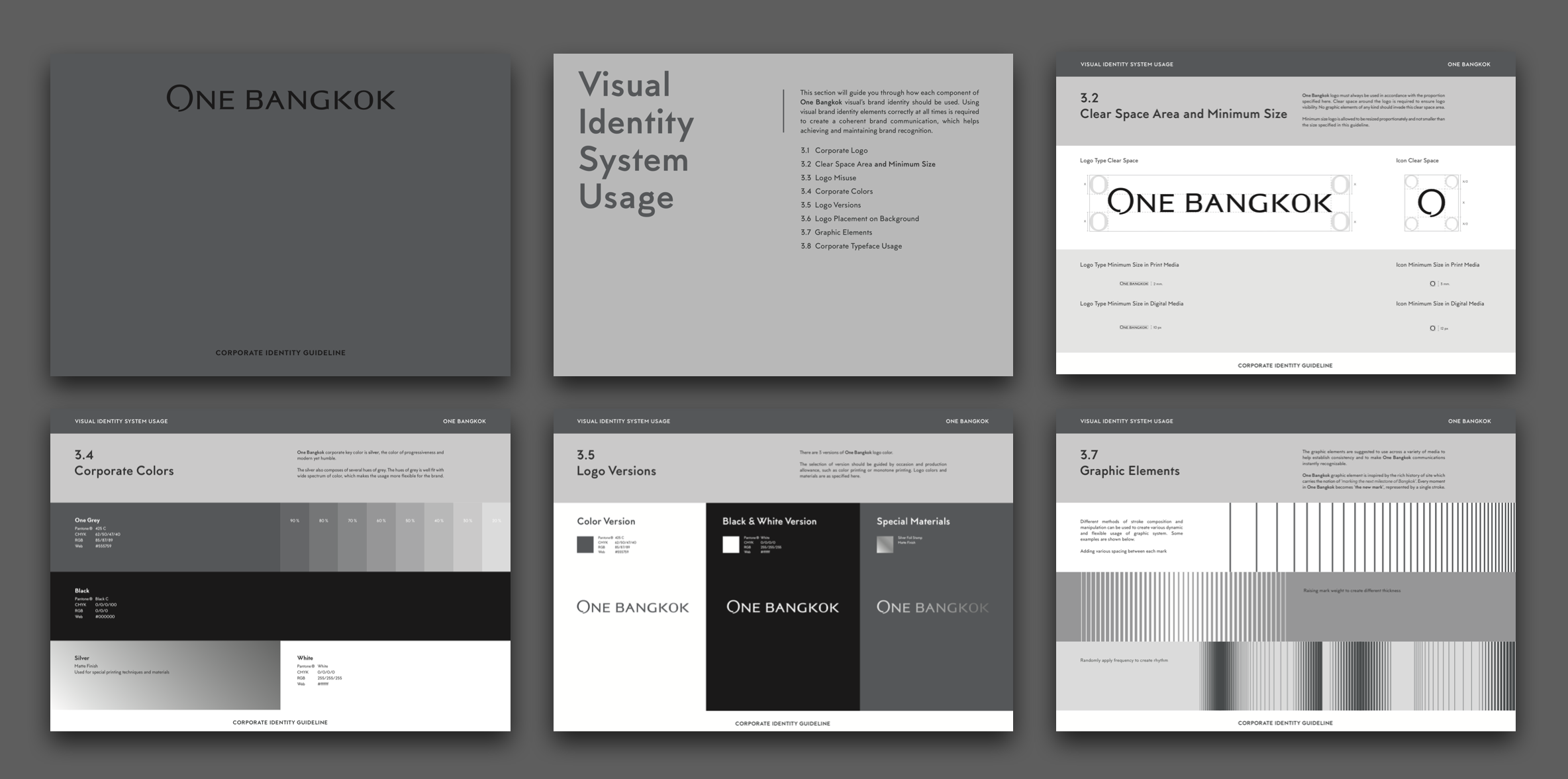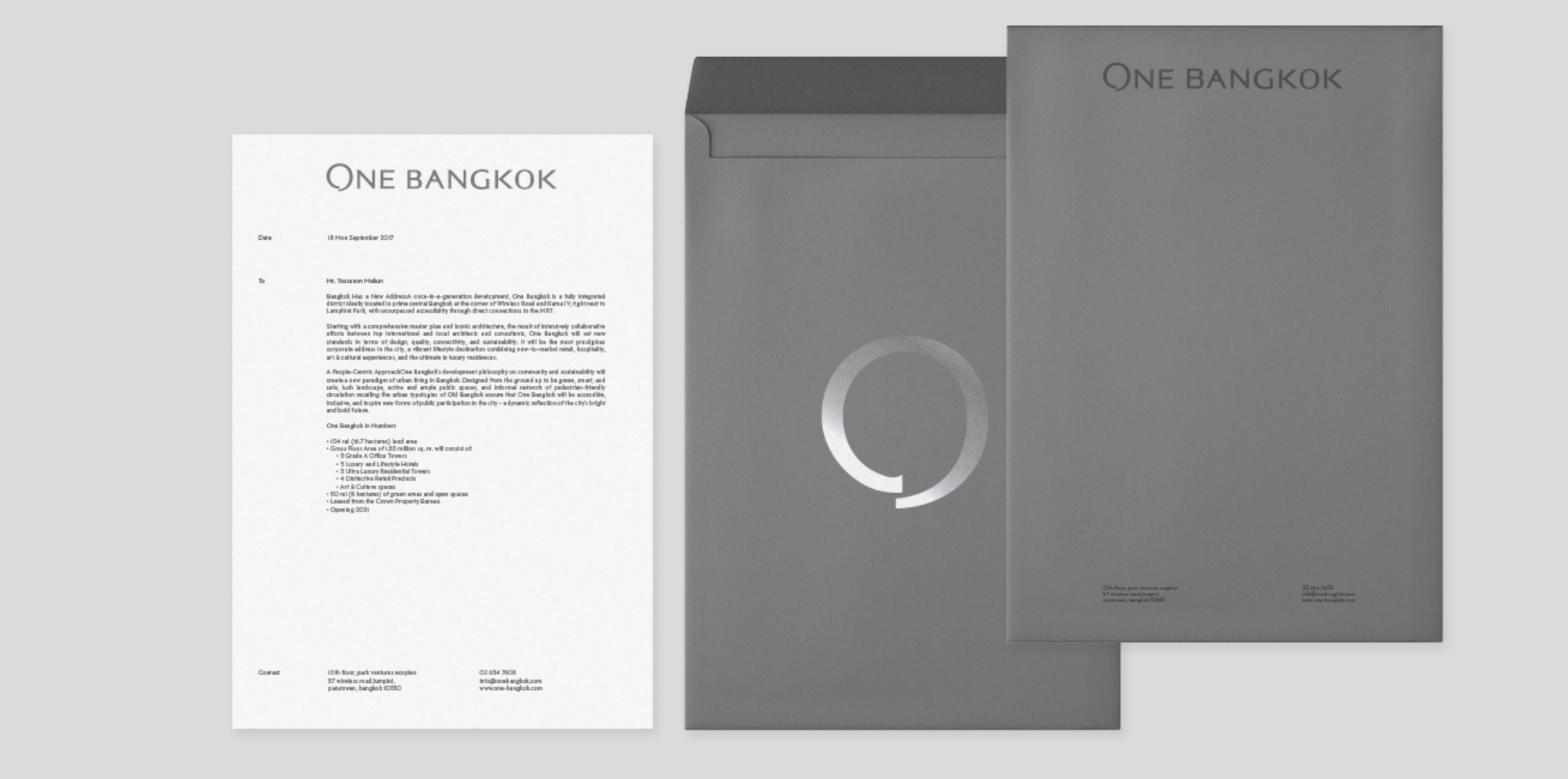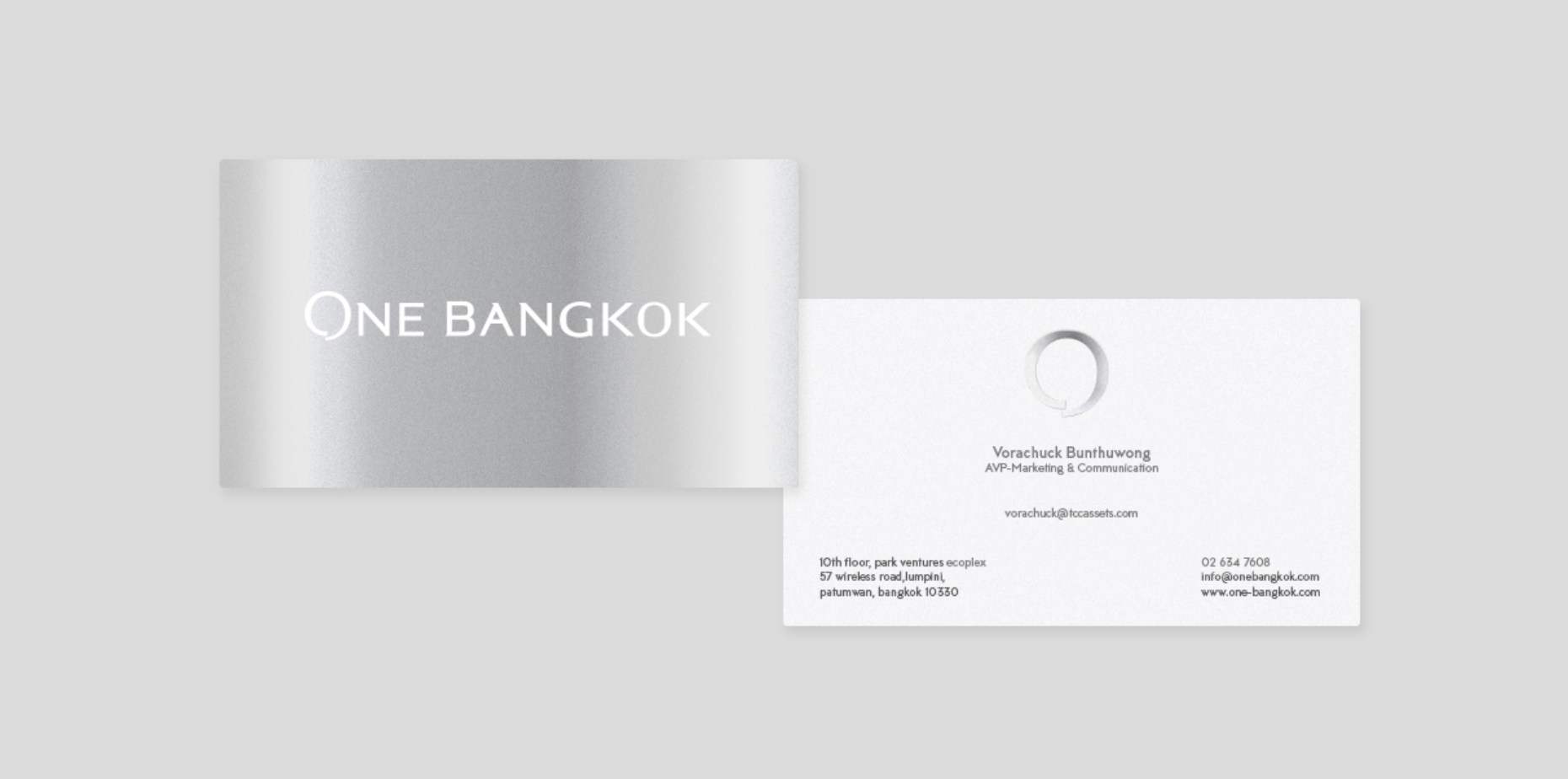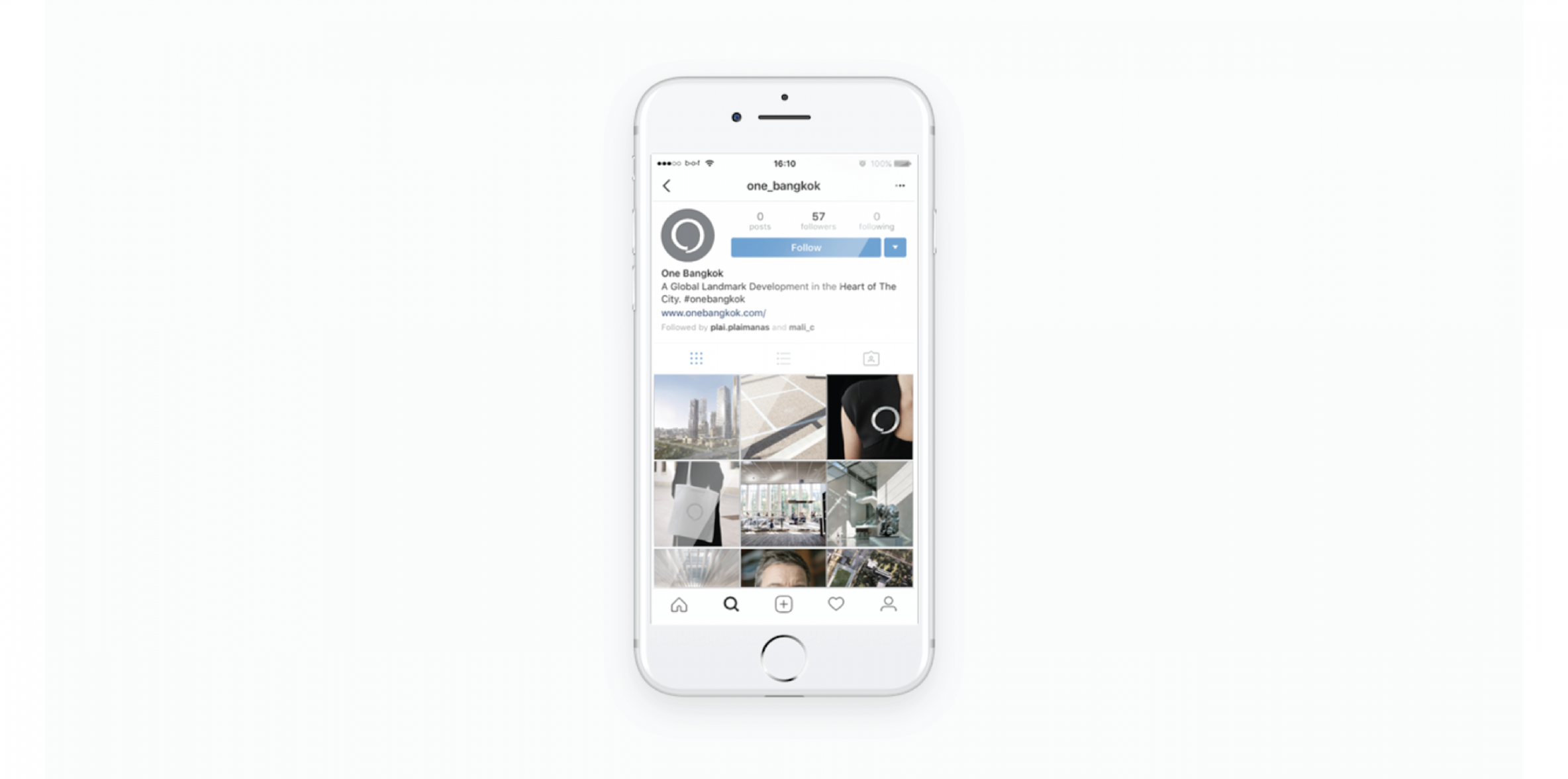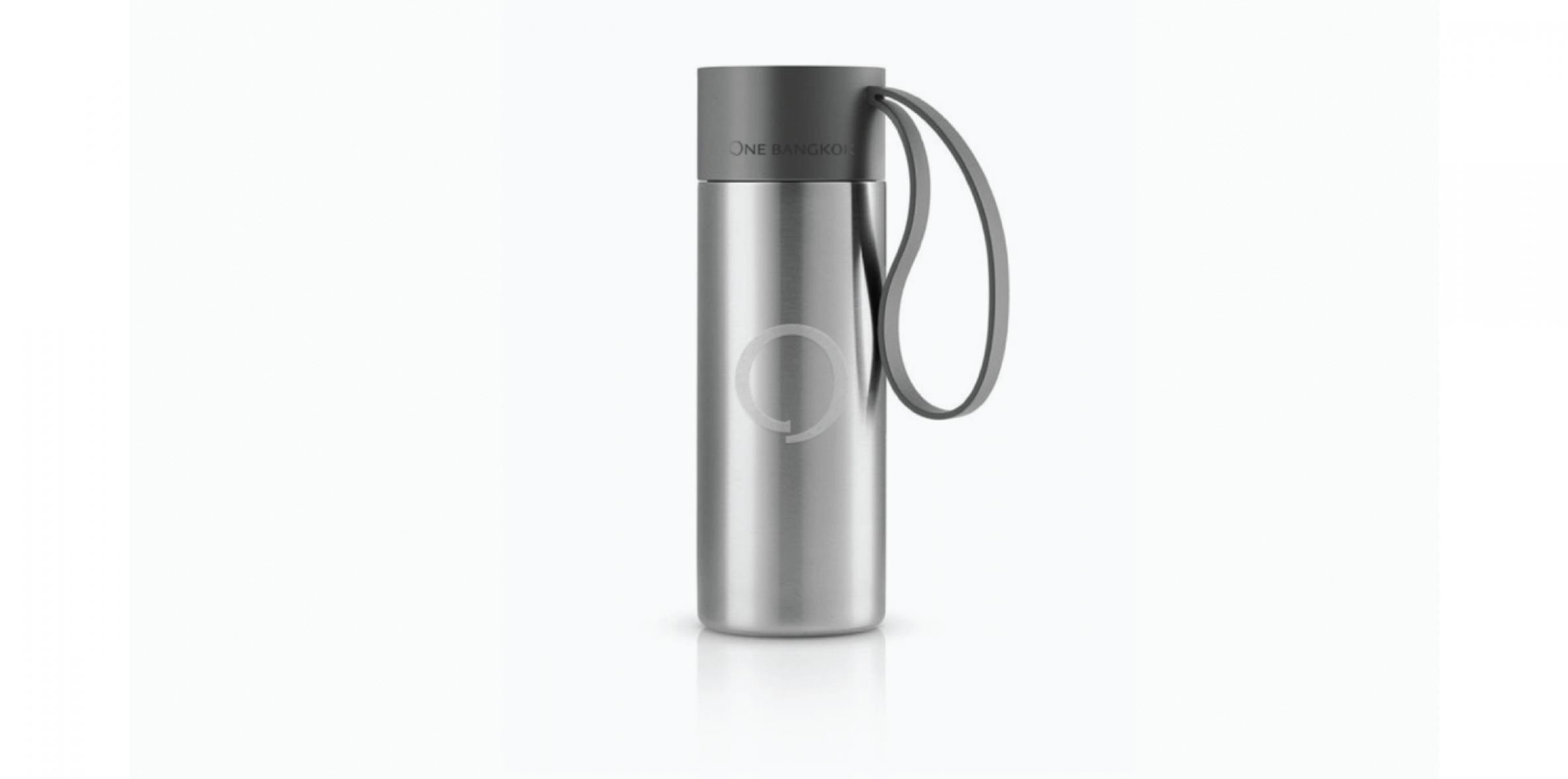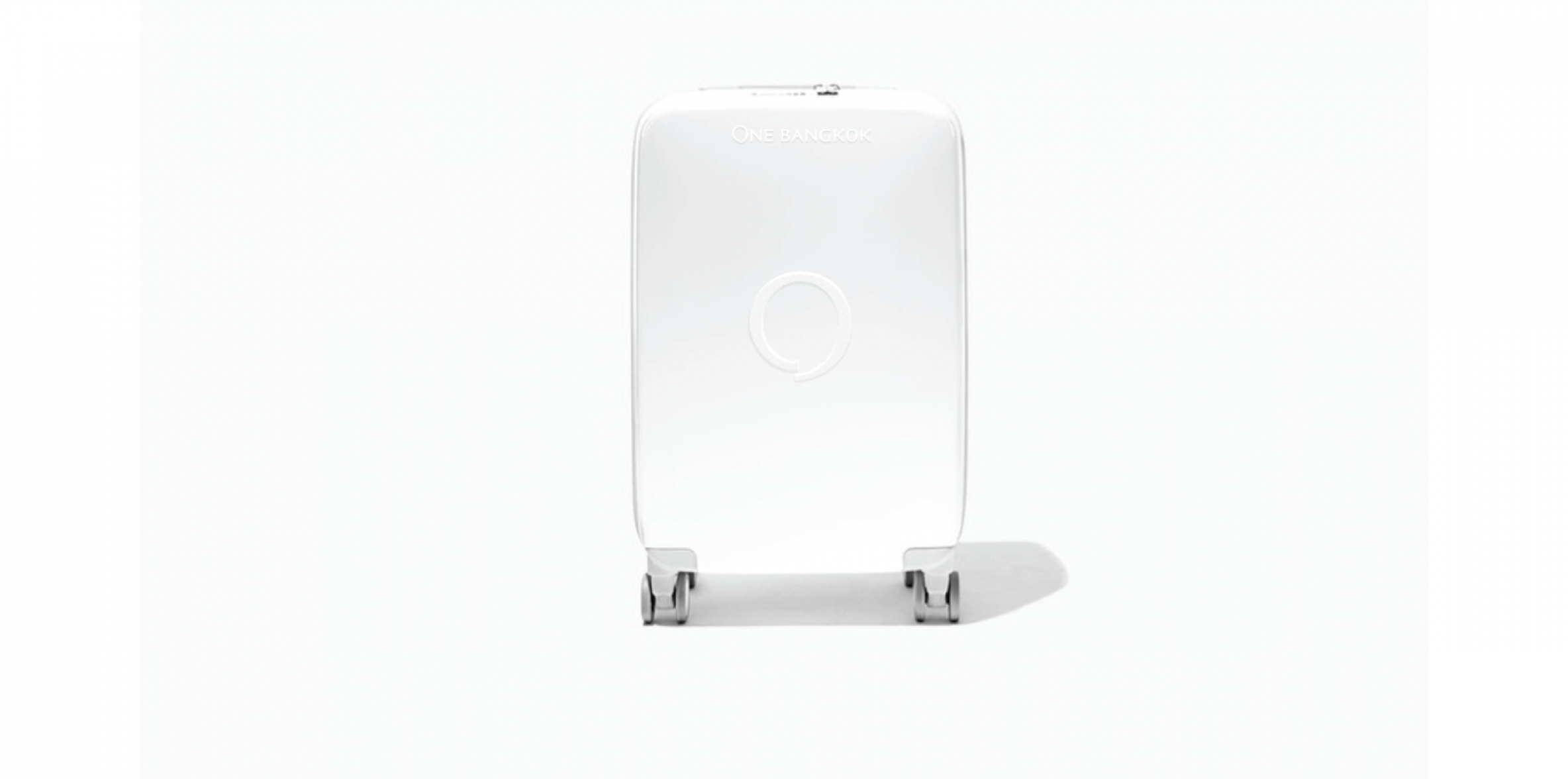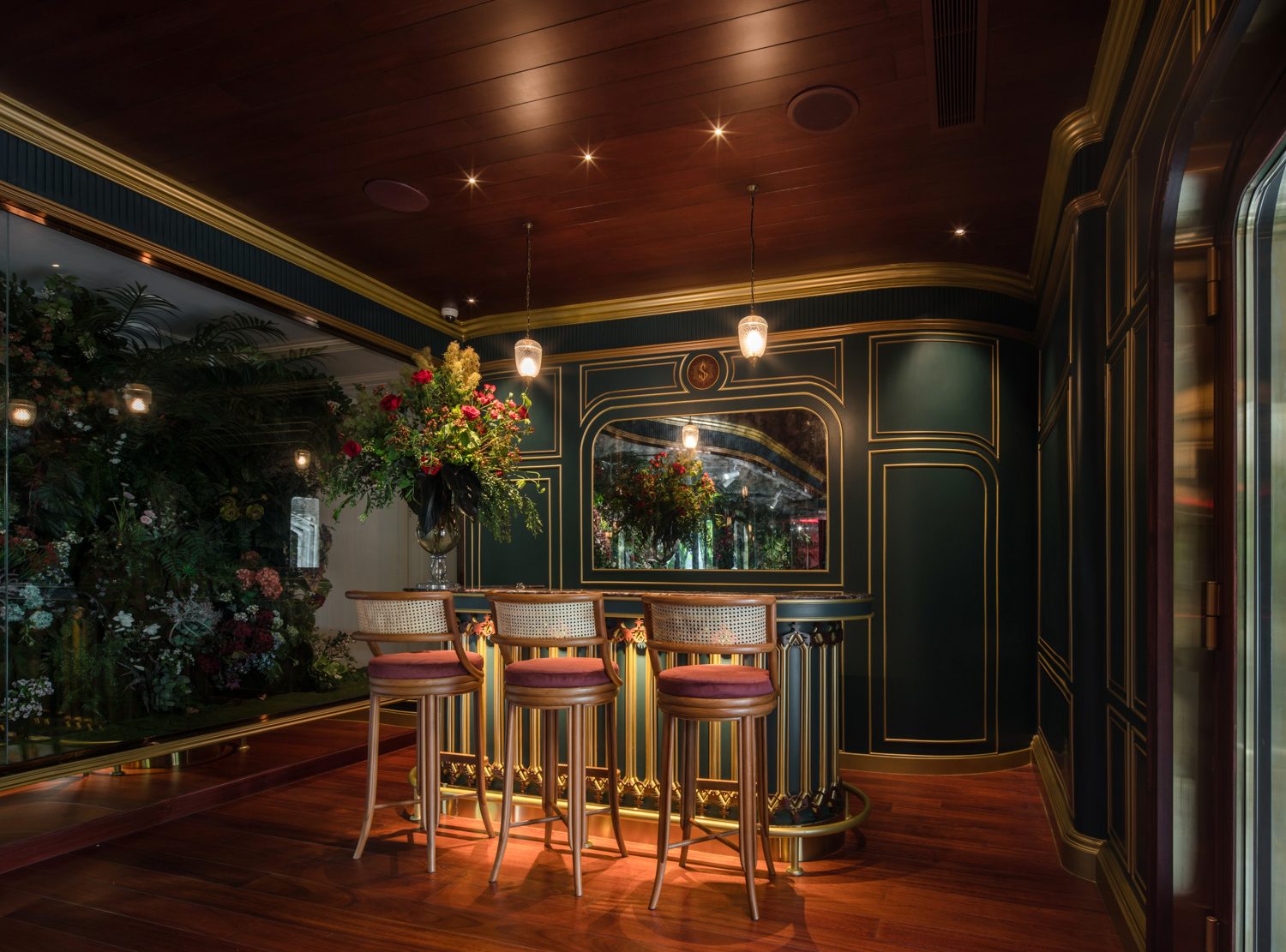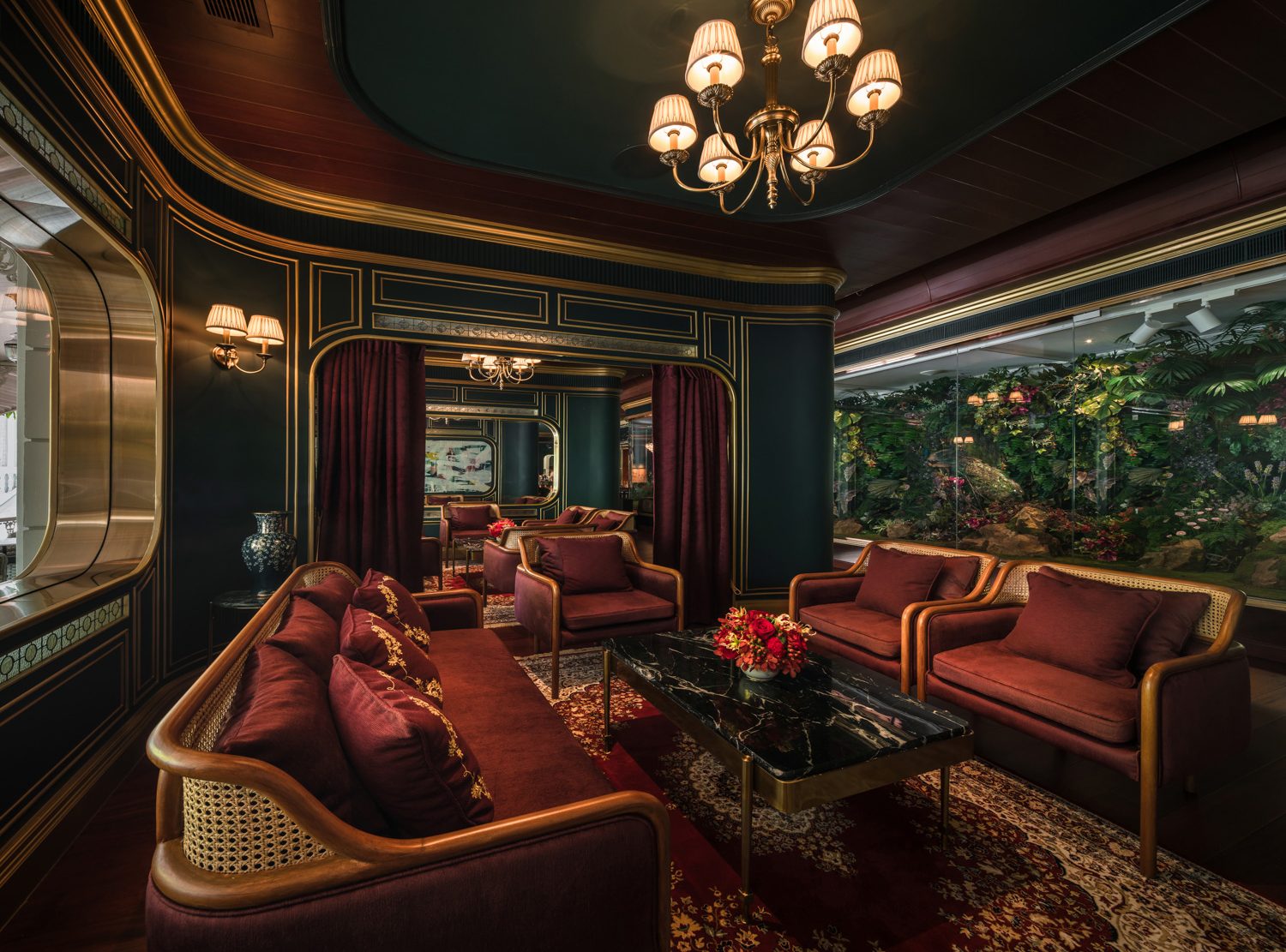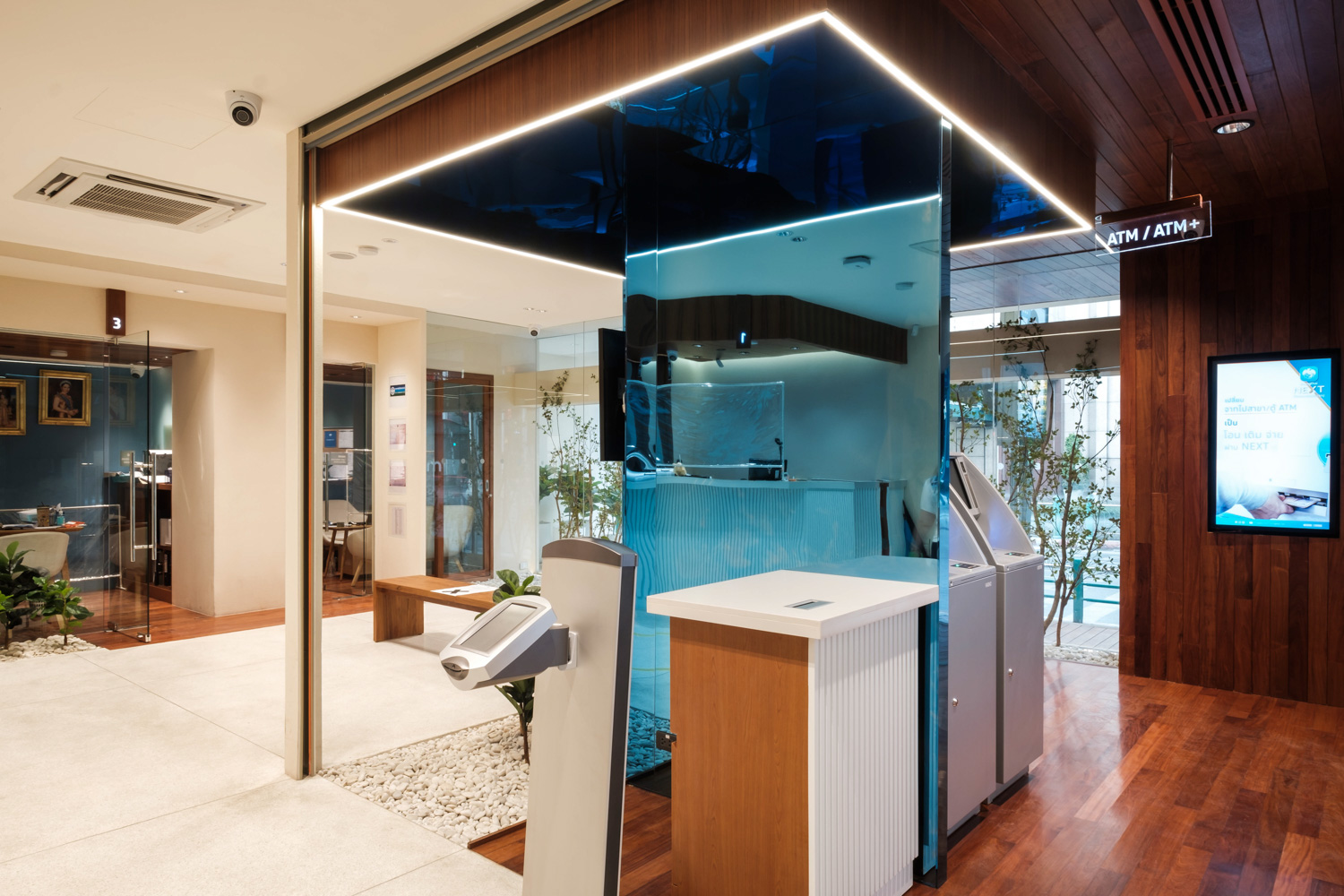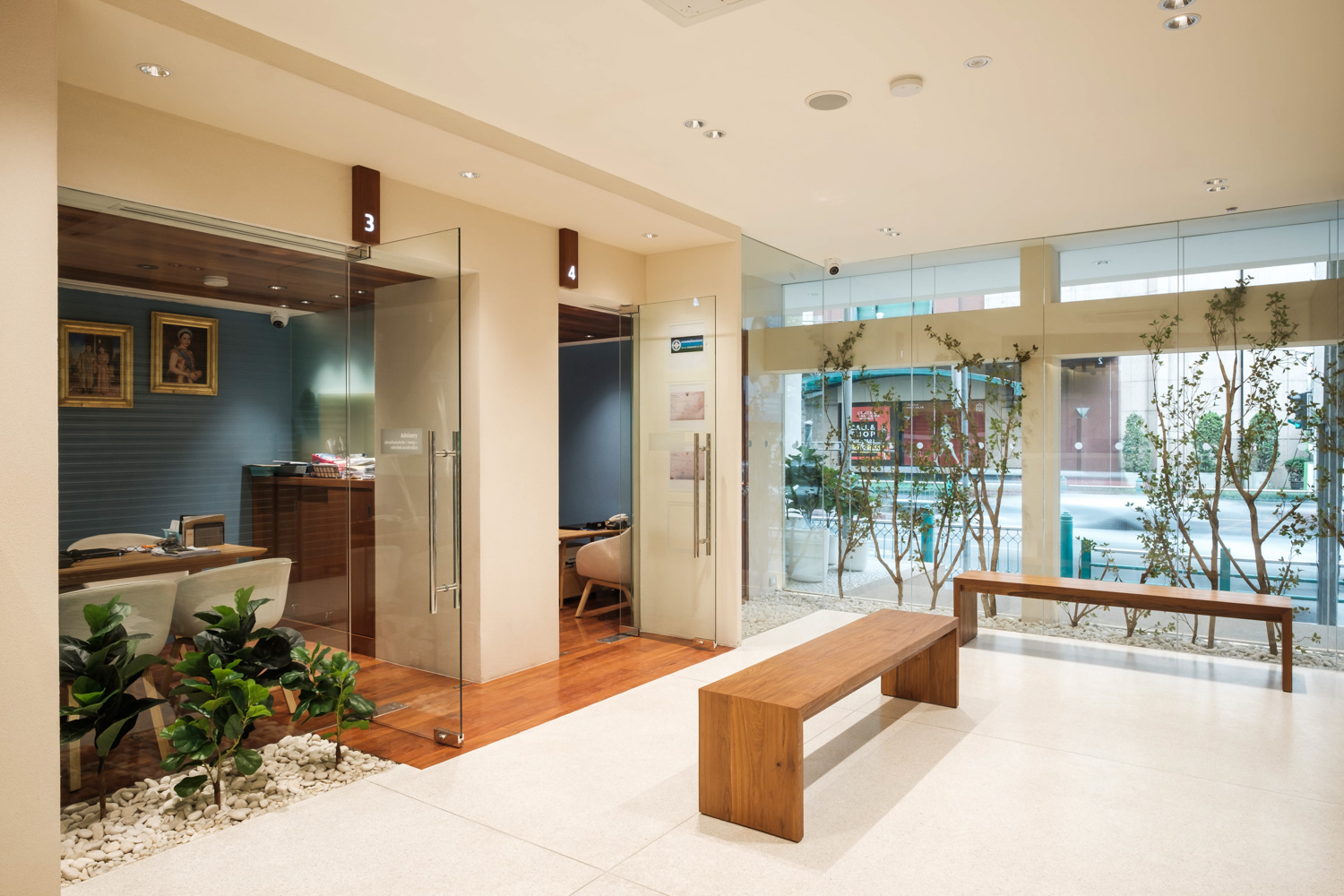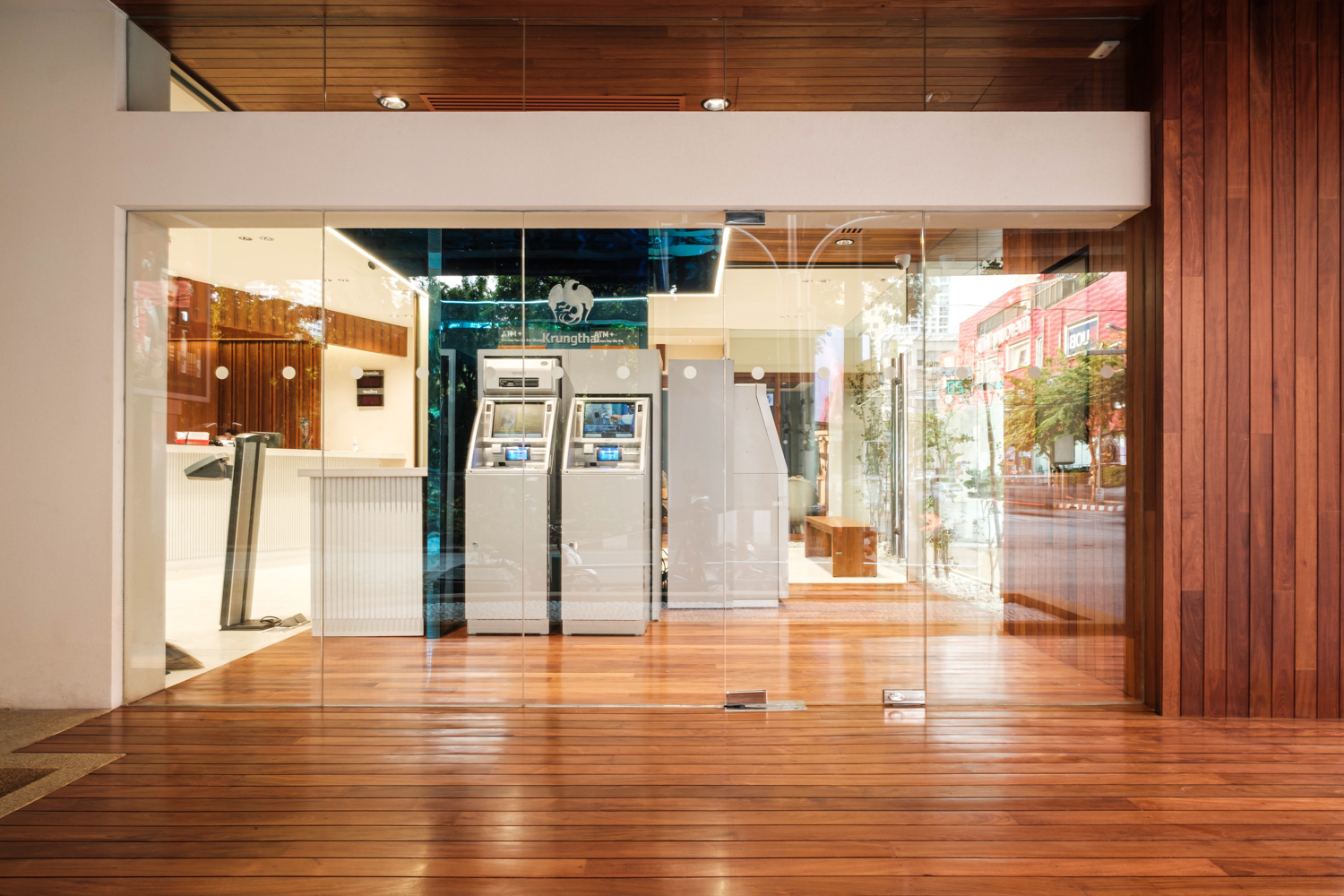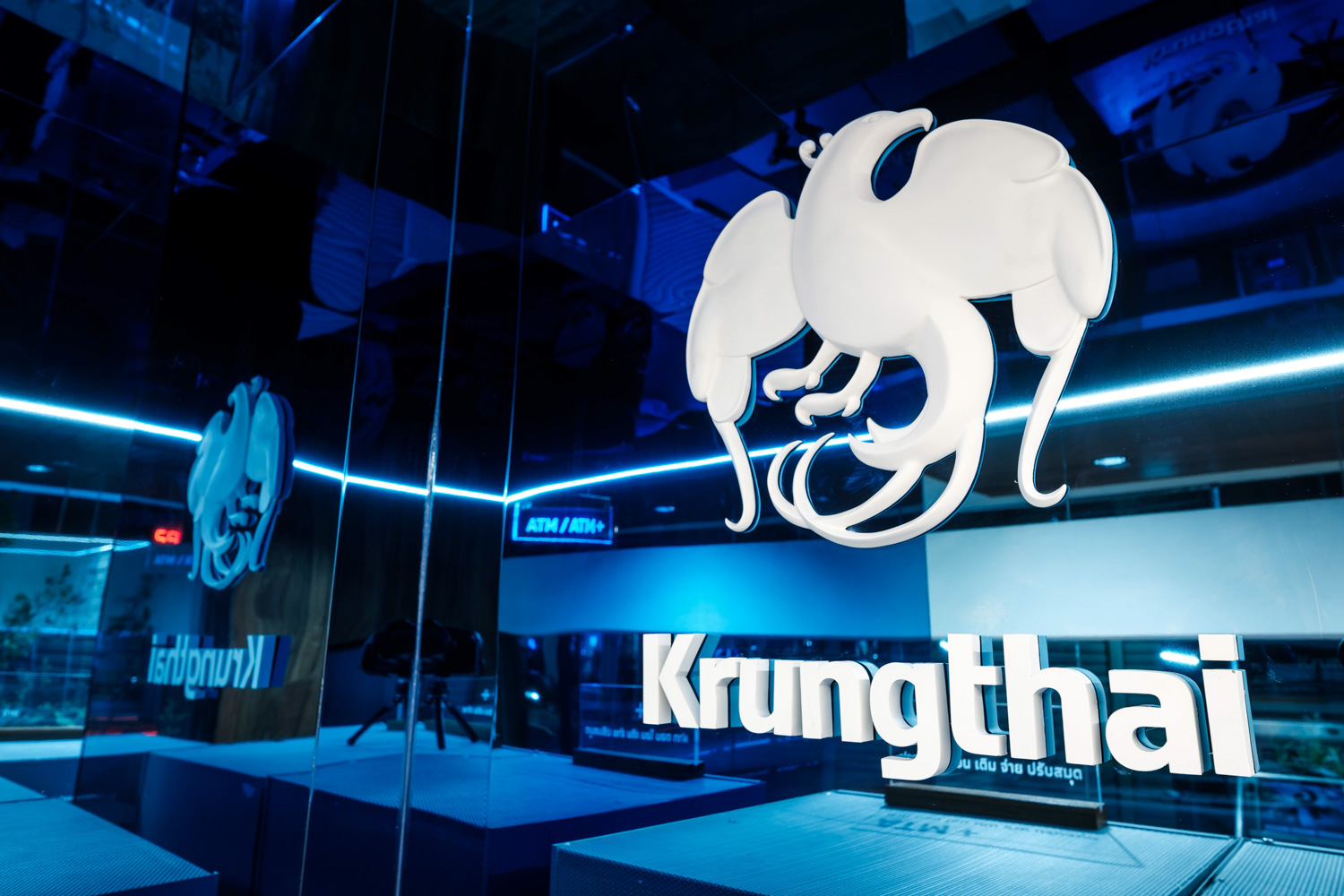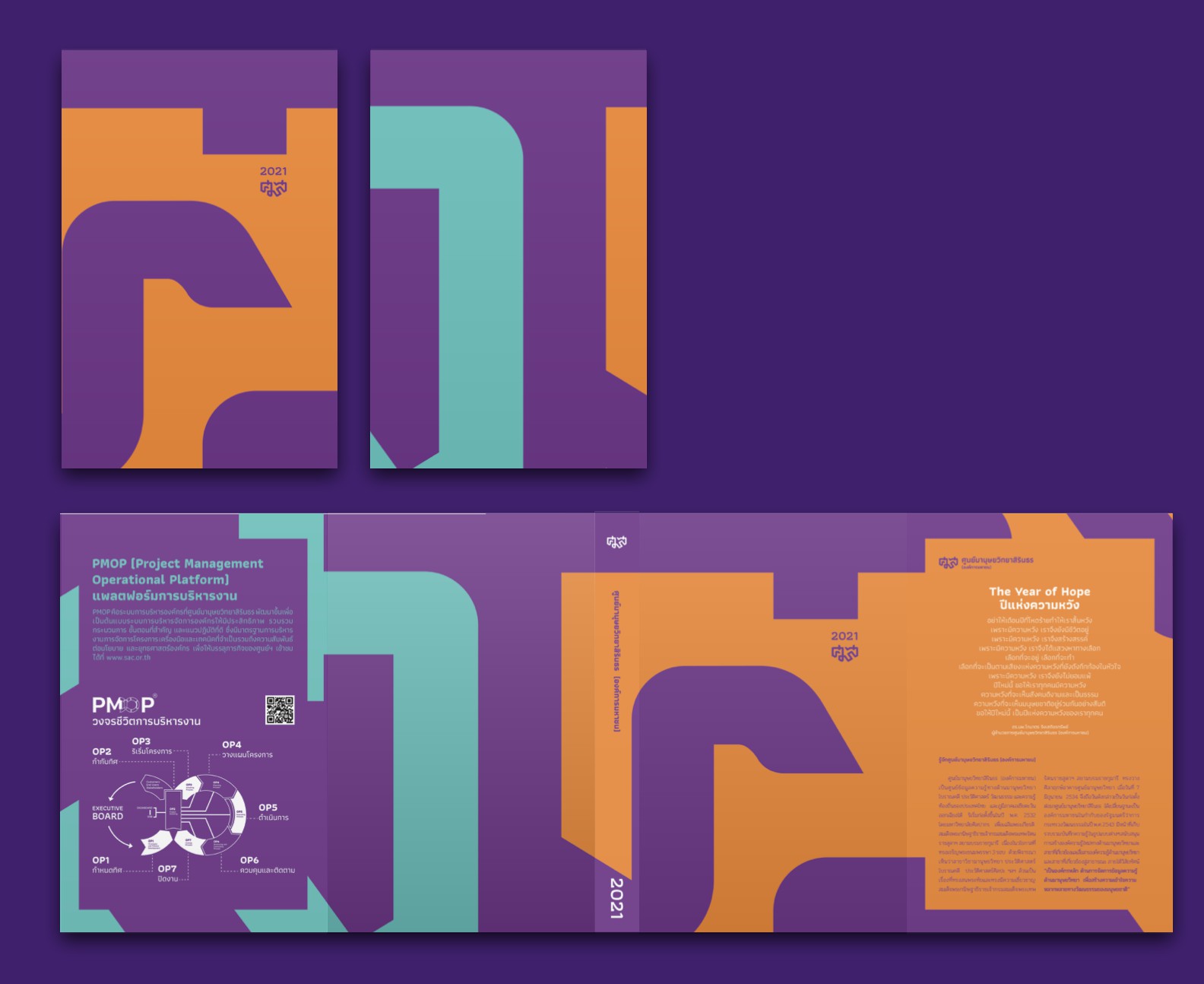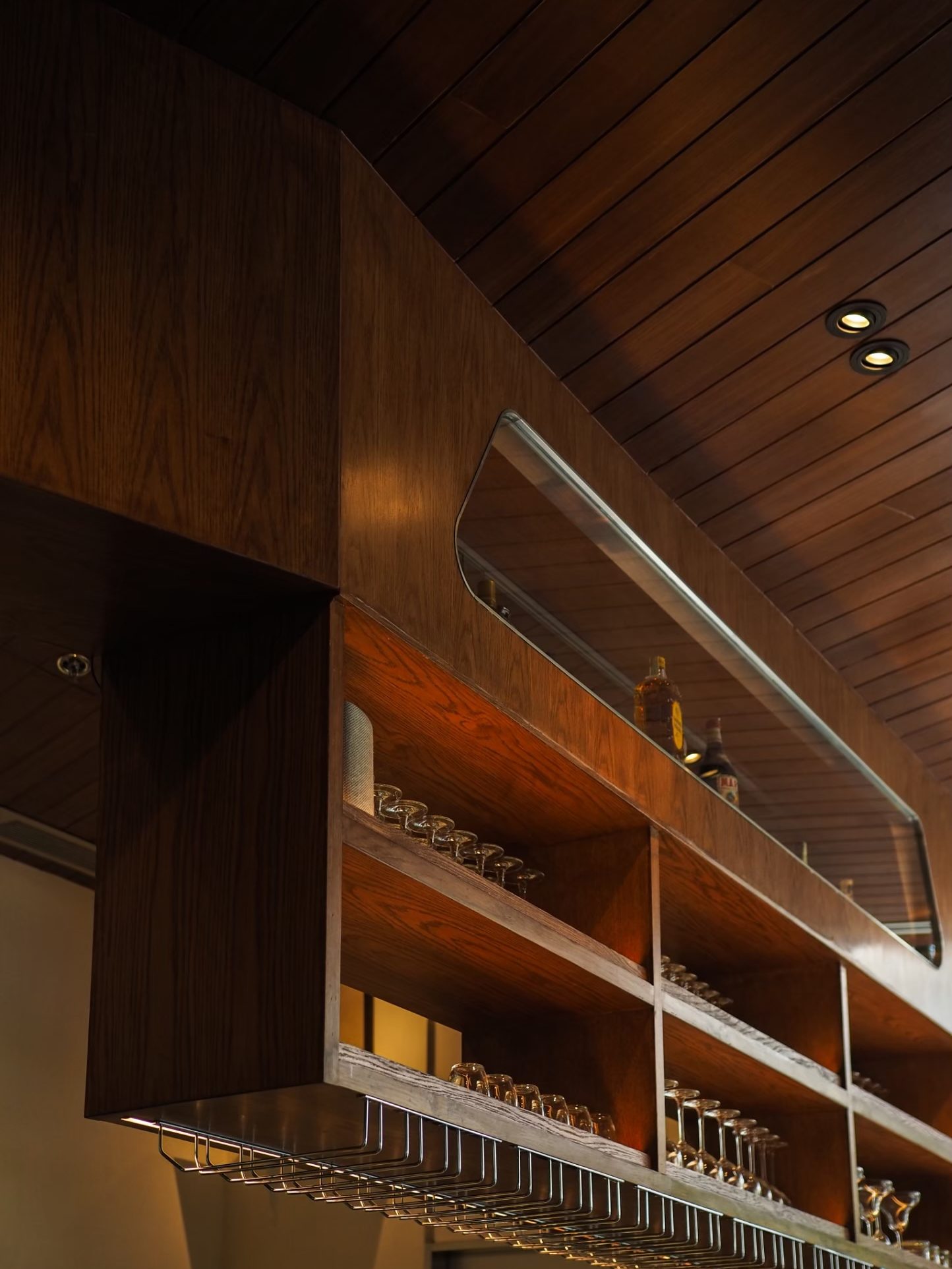ART4D INVITES BE›OUR›FRIEND TO REVEAL THEIR 17 YEARS-LONG JOURNEYS AND THEIR RECENT MOVES TO EXPAND THE SCOPE OF WORK FROM COMMUNICATION DESIGN TO BRAND STRATEGY, SPATIAL DESIGN, AND HOSPITALITY PROJECTS AS WELL AS THE STORY OF THEIR EXPERIMENTAL PROJECT THAT CHALLENGES BOTH TEAMS AND CLIENTS
TEXT: PRATARN TEERATADA
PHOTO COURTESY OF BE>OUR>FRIEND
(For Thai, press here)
In 2004, Mali Chulakiet, Pom Jitpratuk and Nat Luenthaisong, two designers and one programmer, began taking freelance projects together. Most of them consisted of basic graphic design, illustration and interactive design projects. With their collective traits as creative thinkers who like to experiment and have never been picky about the assignments, their works have now extended to the realm of site-specific installation art and interior design projects of various styles and scales.

be>our>friend team
be>our>friend’s current organizational structure consists of four studios—visual communication / strategy / space and hospitality. They are currently operating a restaurant called HOPPE situated inside Velaa, a community mall in Langsuan neighborhood of Bangkok. art4d invites Mali and Pom, two of the three founders of the studio for a conversation, on the studio’s long and memorable journey since its embarkation as a budding design collective, seventeen years ago.
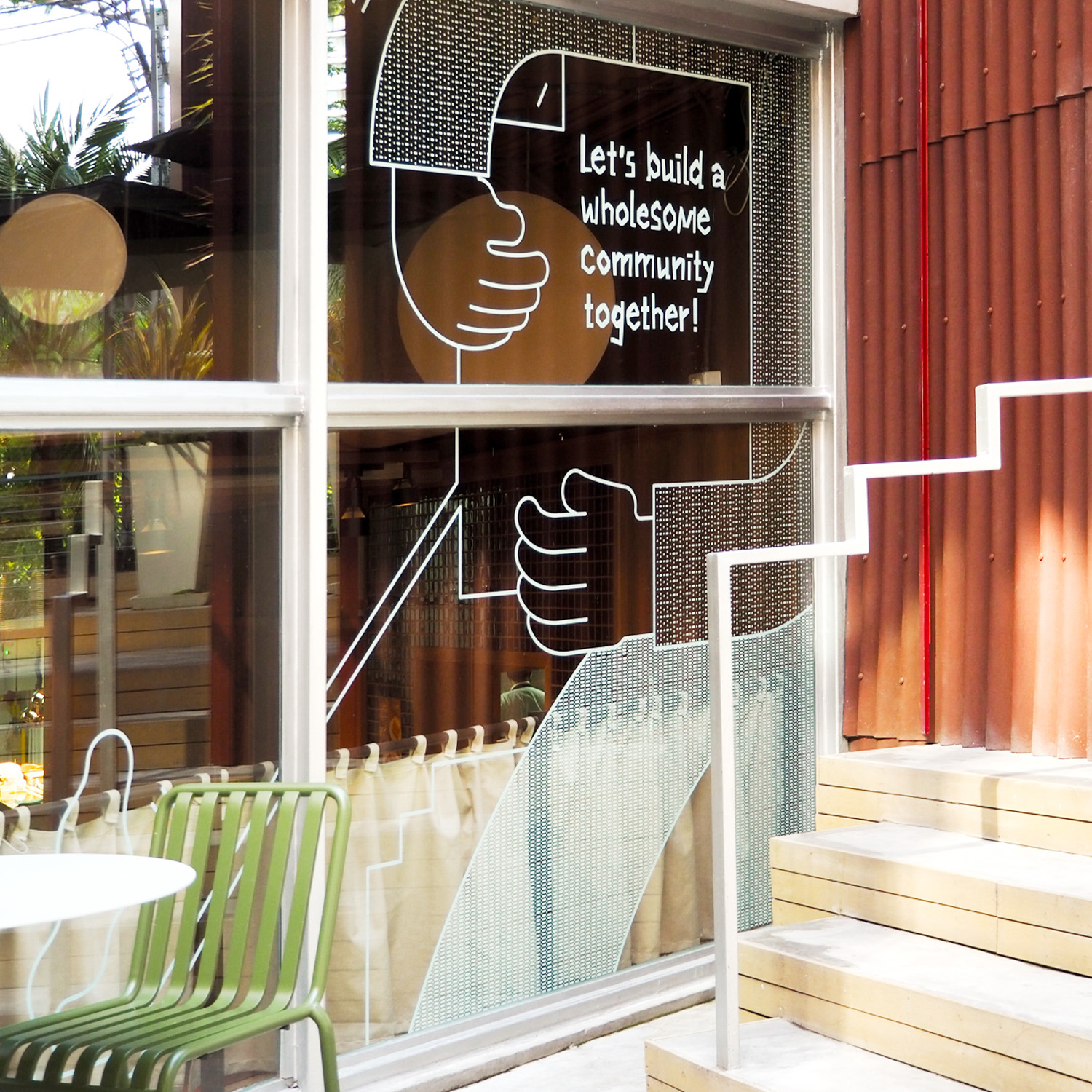
The Commons Saladeang
art4d: Since the team so much bigger now, how do you guys manage and speed up on completing responsibilities?
Pom Jitpratuk: We supervise different teams. I’m in charge of the Space team while Mali oversees Strategy and Visual Communication. But we help each other with the Hospitality projects and other parts of the studio. If it’s a project that requires us to work together, we’ll start off together before distributing the tasks to our teams to further execute them.
art4d: What are the key factors you prioritise when it comes to choosing ideas you will present to a client?
PJ: For the Space team, I think it’s mostly the originality of the design that each client is going to get from us, whether it’s the concept or execution. We create a specific design for a particular client, or brand or space so that when users experience the design firsthand, they can have a certain emotional link to it. That sensation will make them remember the feeling of being inside a space or interacting with a work. It isn’t just about a style.
Mali Chulakiet: We want to create beautiful business solutions; a space that looks good and is the most aesthetically pleasing as possible while simultaneously fulfilling the business and communication purposes and requirements.
art4d: What do you think is your signature or the element that makes be>our>friend’s design service distinctive?
PJ: Our signature is the way we think and approach a space as a floor plan. We see the interiors as a series of transitions people experience within a day. When people travel from one place to the space we design, we want them to feel disconnected from the present moment or from reality once they’re inside. We highlight the importance of users’ emotions and experience that arise from the way they interact with the space we create, and all the while we still include all the necessary functions that come with the work’s context. For example, a restaurant will have it fundamentally needs, but what’s even more important is people’s emotional experience when they interact with the space.
The distinctive quality is also our service and how we work closely with every client when we’re developing a project.
MC: be>our>friend took our very first step with experimental projects. We work on projects that are conceived from conceptual thinking and find the process that can help materialize those concepts. Today, the concept/process based method is still our signature. We’re both thinkers and doers.
Our job begins from brand strategic direction by gaining an understanding of the strengths of our clients and target groups. We have a design research team that will help us understand the in-depth information about a business before we develop a concept that is very specific to fulfil each client’s business vision, so that they can communicate with the clientele effectively. This extends to the design execution process, which has to go through different steps of experiments and crafting so that each work is genuinely unique.
It starts with setting a brand strategic direction that will allow us to understand the strong points of each business and target group. We currently have a design research team whose work is to help us understand the insights needed for the development of each design as well as creating a design concept that captivates business vision to inspire the target. Their input also includes the design execution process that involves experimentation and crafting to make each project genuinely unique.

Hilton Pattaya
art4d: What’s the drive behind each project?
PJ: The team’s dedication is a significant force to be reckoned with. I personally feel like what drives me the most is being able to do things I have never done before. First and foremost, it’s the opportunity and trust that the clients give us. Another aspect is how each project forces us to learn about everything all over again, and that allows me to explore new avenues that I’ve never known before. It enables me to rediscover my passion for interior design. I got into interior design way later because I graduated in graphic design and when I first started working, I was an illustrator.

Hilton Sukhumvit Bangkok
MC: We give great importance to our clients. I think our studio has grown to the point that we have reached today largely due to the trust we have built with our clients. Most of our clients come with visions and passion in their businesses. They come to us with new challenges that allow us to do things we have never done before, or work on areas that we specialize in but on a much larger scale. I always say to our team members that every project we have done is successful because of the trust our clients have in us. They respect us and give us a chance to explore new possibilities. I like to tell our team about the early days of our studio, like, the first signage design we did despite having no experience in that type of work in our portfolio before. But the client saw our potential and ability to do something new, and they knew that we could find a way to make it happen. The first signage design we did was for Hilton Pattaya, and then we created one Hilton Sukhumvit Bangkok. Recently with One Bangkok, the client came to us with a vision in urban development and it’s an area we also find to be very inspiring.
Another driving force is the energy of the team. We’re always ready to tackle new projects together, creating works that will take us further into our journey. We all share the same goal.

One Bangkok
art4d: What questions do you often ask your clients?
PJ: How do you want people to feel about the space or the brand? If we were working on a house, I would ask them about how they want the living space to make them feel.
MC: If they are business owners, I would ask them about their problems. If it’s a branding project, we would talk to them about why they chose to run and develop this business and where they see it in the future. We would also ask and discuss what potential obstacles that may prevent them from reaching their goals.
art4d: What are the obstacles of running a design business these days?
PJ: I like to think of it as a challenge. We’re in the time period where creativity and design are integrated in practically every business and scenario. It causes people’s understanding about creativity and design to be significantly broadened and diversified. It makes our work both easier and harder at the same time. It’s easier because design becomes omnipresent and more common, but it’s difficult in the sense that once people are more familiar with the notion of design, they have their own opinions, and that means a lot of ideas, which at times, may not be in line with the context or the parts we need to focus on.
Another challenge that we’ve encountered throughout our career, not just these days, is to make our clients confident in designs that are still experimental; styles and ideas that are somewhat unprecedented or unfamiliar because there’ll be doubts whether they can be built and so on, especially with projects that have bigger scales and larger teams.
MC: What makes the work more exhausting is the need to get projects done faster. These days, businesses cannot wait; the competition is high so we have to work faster to keep up with how the business is going so that we can maintain the quality and standard of our service. It’s easier nowadays to create a beautiful looking design. People can just open up Pinterest, copy a piece of work, and get a nice result. But our studio creates branding specifically for a client’s business and visions, and sometimes it’s hard for new clients to understand why our fee is high and why we take longer to work.
art4d: Could you give us an example of some of the projects that you’re most proud of, let’s start with Space?
PJ: I like HOPPE because it originates from my personal preferences and lifestyle, whether it’s the era or the music. I also like that I get to ask myself the same question I’ve asked our clients about how they want people to experience the space. With HOPPE, I asked myself about the kind of space I want to spend my time in.
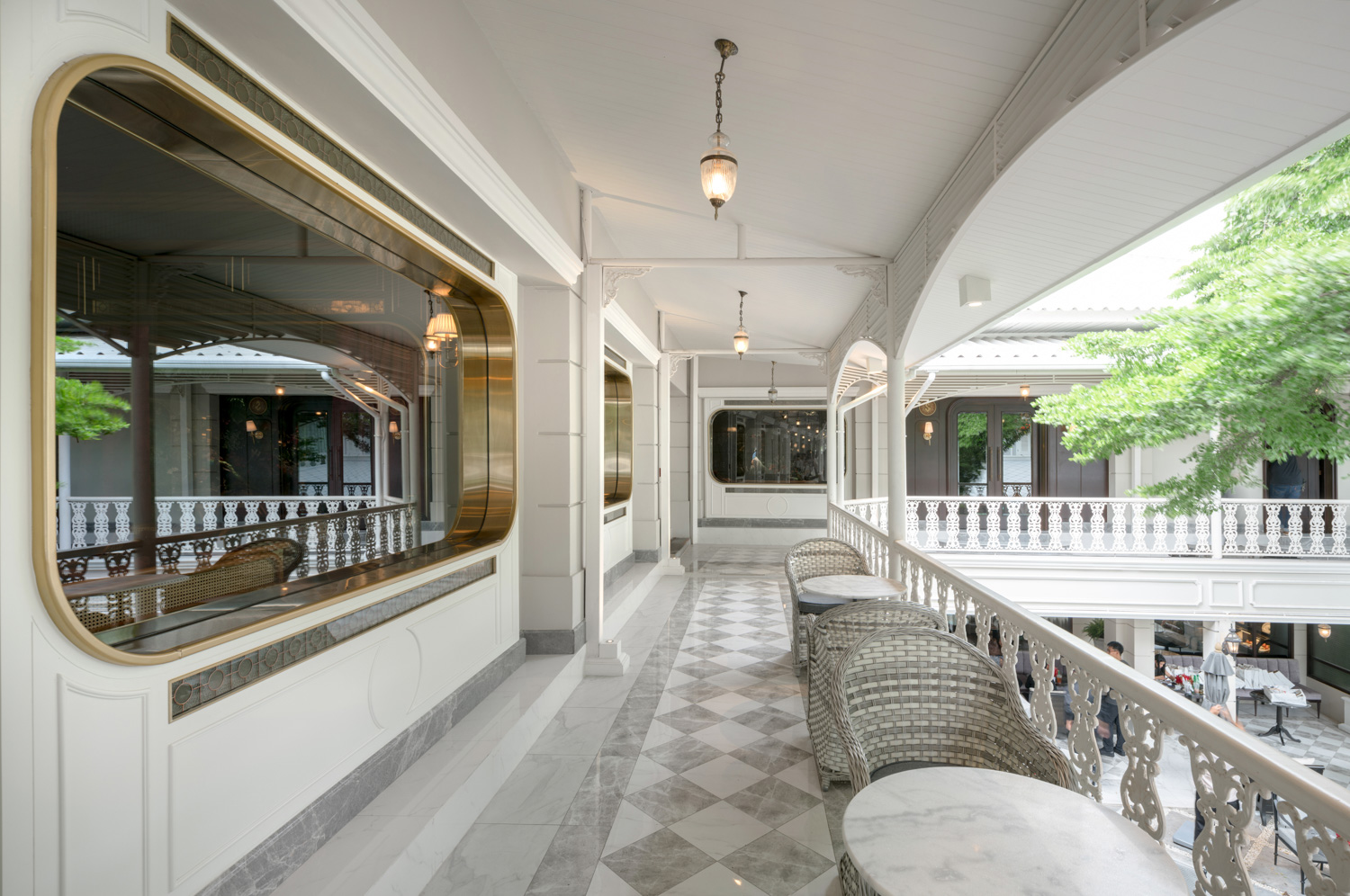
Suriyasai Content Bar
The next project I’d go with is the Suriyasai Content Bar. Thanks to the owner, we had the chance to take the project to that level. It’s the work that I think best embodies the concept of transitions one experiences in a day, whether it’s how the space is approached or all the different elements we included in the project such as the gallery that runs along the space, or the details of the lighting from our collaboration with APLD. The lighting design and the lamps were chosen to reflect the time period in which Mae Khong brand represents.
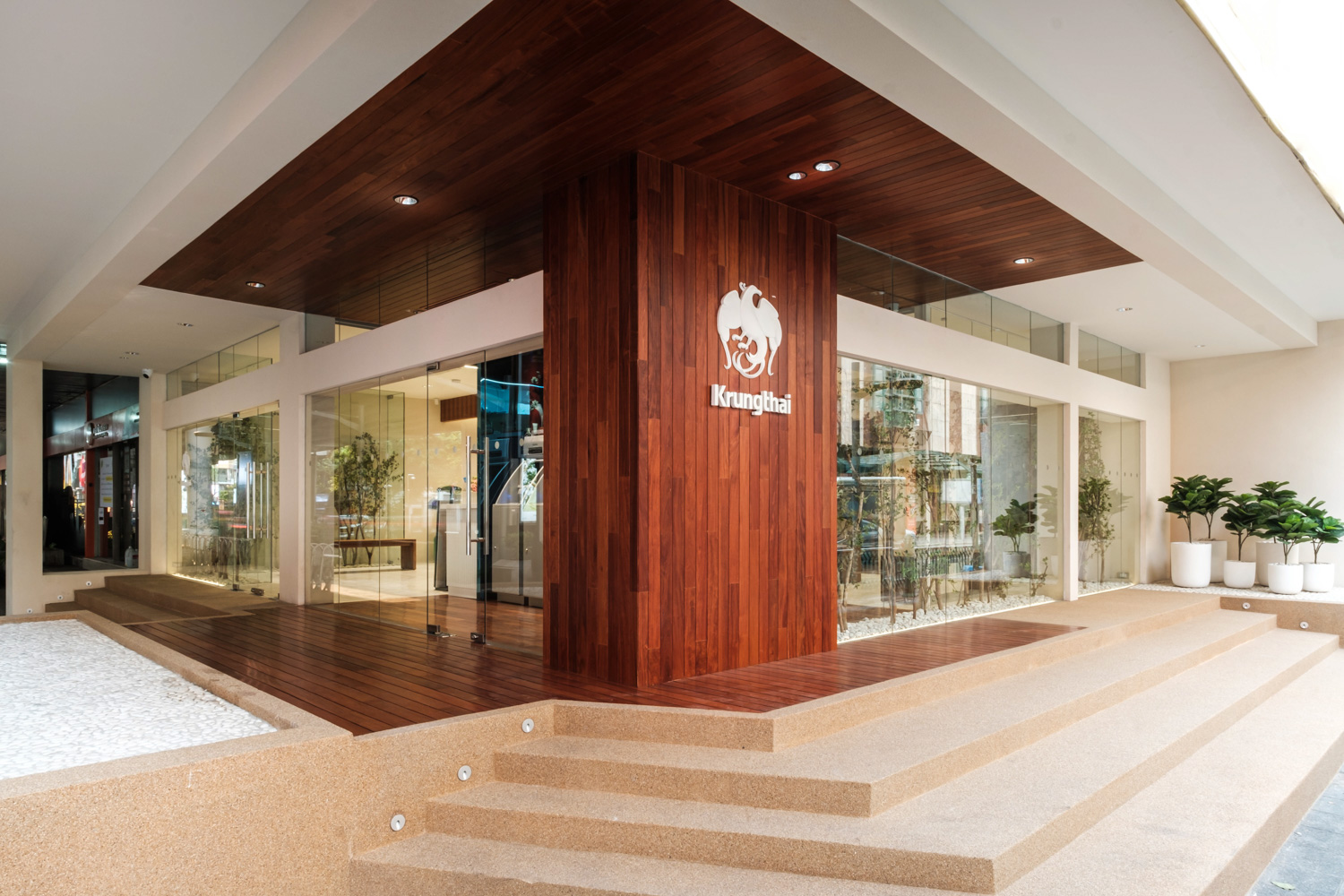
KTB
Another project that I’m proud of and really like is KTB. First of all, I had never thought that we would be given a chance to design a bank building. Secondly, the KTB team that we worked with had a very interesting view about the project. I liked that the site is this old building with its own heritage that we could work with. What I loved the most about it is the fact that we were able to preserve the overall vibe and context of the bank. Otherwise, every building would look the same.
art4d: What about projects from the Visual Communication studio?
MC: I think I’m proud of almost all of our projects because each work has allowed us to grow, whether it’s in our thought process or our internal management system, which has been constantly developing to work more effectively with new challenges that come with new projects. All our work has helped us come up with the kind of service that can ultimately save time and money for our clients.
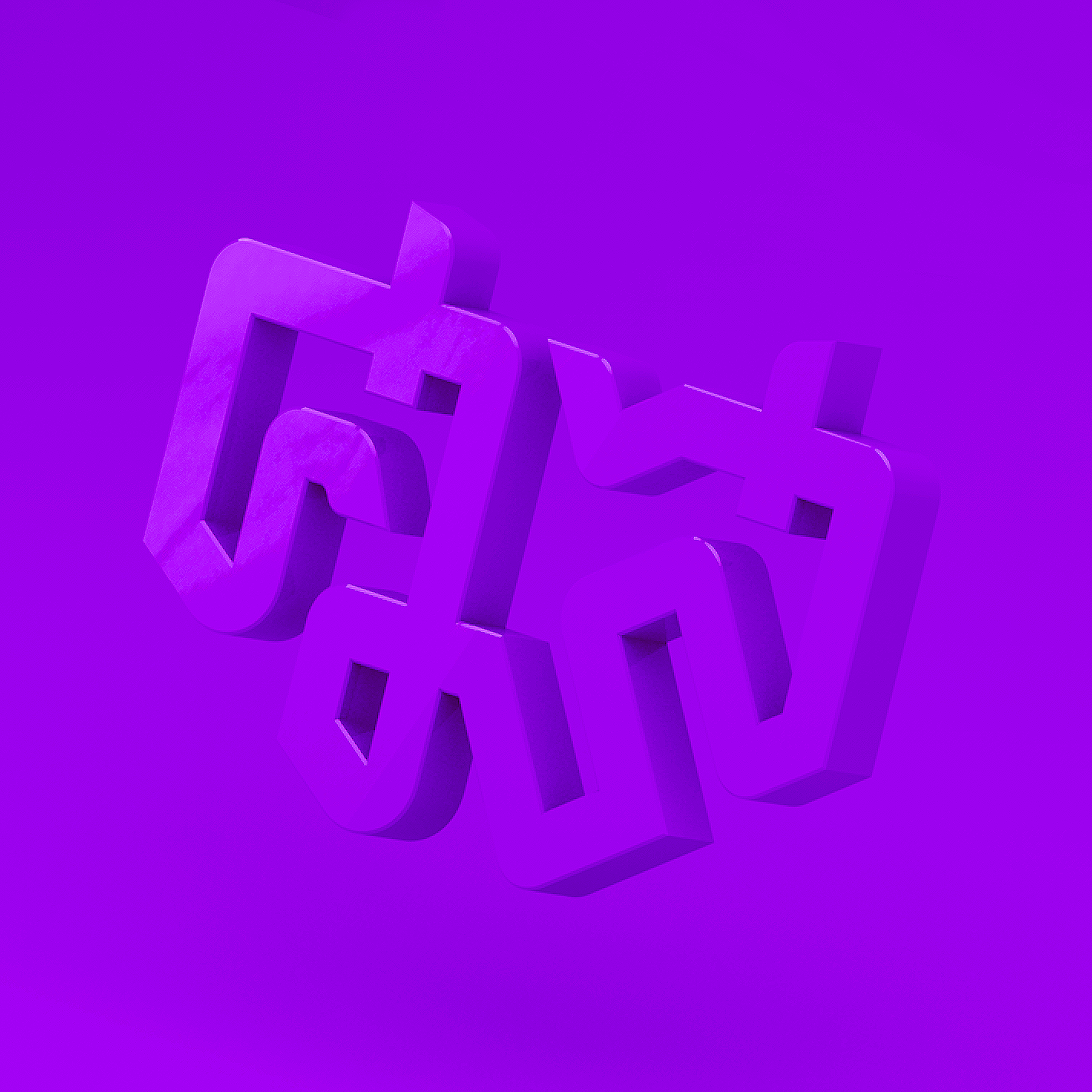
Princess Maha Chakri Sirindhorn Anthropology Centre (SAC)
art4d: What about the Strategy team, what projects are you most proud of?
Kolayuth Jirawongnirandon (strategy team): Personally for me, it’s got to be Princess Maha Chakri Sirindhorn Anthropology Centre. I’m proud to be a part of this project. The center itself is a public organization established to collect and archive anthropological data. It has been operating for thirty years now and it works to contribute to the improvement of public interest through anthropological knowledge. I’m proud of how we are able to integrate our expertise in our branding and communication design to reconcile and explain the rather complex and unfamiliar body of knowledge. Meanwhile, we had to translate the very passionate visions of the SAC team into a structure that is both tangible and emotionally beneficial to the public. It was a very fulfilling project because the brand is genuinely developed from the client’s passion and spirit.
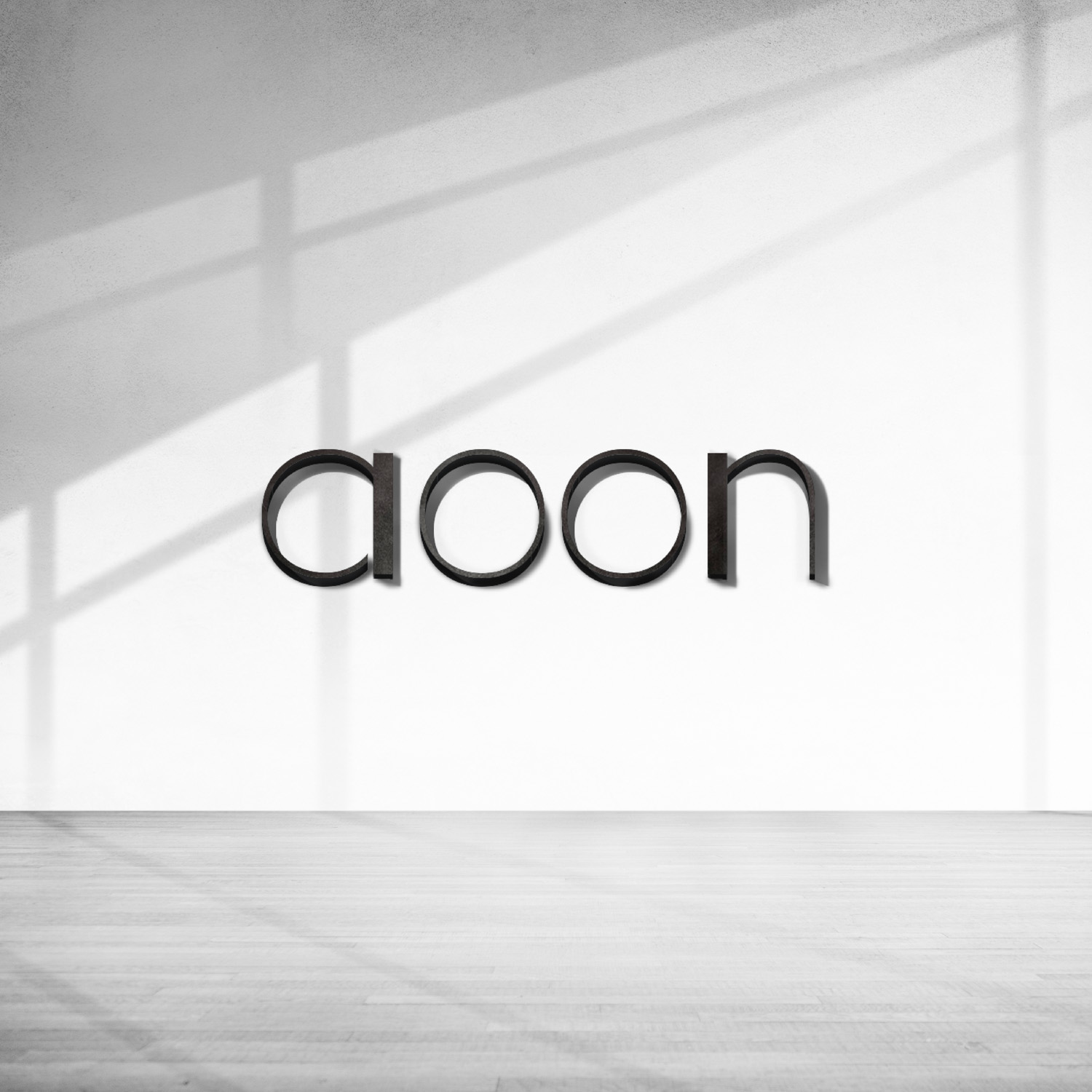
aoon
‘aoon’ is one of the projects I want to talk about from the aspect of strategy. Initially, the brand was formed and marketed through word of mouth. They hadn’t done any advertisement campaign whatsoever because of the pandemic, which prevented them from having a proper product shoot. The important factor of the project’s success was actually the client. They broke away from the conventions of residential estate projects with the architectural design that really answers to people’s way of living and doesn’t merely serve the developer’s commercial benefit. That is what makes their product special. When we worked on the branding, we paired up the client’s sincerity with consumers’ pain point, which is the need for comfort and security and how the product factors the visions and dreams homeowners have for their future.

HOPPE

HOPPE
art4d: How about the Hospitality team?
MC: I’m going to go with HOPPE. This project is conceived from the branding project we did for Velaa and we saw first hand the potential of the space. We saw the value of the brand and when the client asked if we would be interested in opening up a space in the project, we were on board. It’s given us the experience as a brand owner and a tenant. We’ve integrated all of our experiences and knowledge from every aspect, from business, marketing, kitchen space design, and human resource management. We designed every touchpoint of the brand, developed products, and controlled the quality of the food, ordering process, storage and inventory management, stock assessment and everything about the operation system including curating user experience. We opened for less than two months and then the pandemic hit. It’s been two years now and we’re still at the stage where we have to solve problems on a daily basis, and continue to develop our products and systems to handle the situation that is constantly changing.
The current scenario has forced us to learn about the business and the operation side of it at an incredibly fast pace. From dine-in service, we now have to develop packaging for the delivery service, adapt our selling methods, help our staff develop a new mindset, and to top it all, come up with new marketing strategies. And we’re still going until now without having to let go our staff or cut their salary.
art4d: Last question, what’s be>our>friend’s type of client like?
PJ: Our clients can be anyone. Perhaps our type would be someone who wants to explore and create something new, a person who pushes the boundaries of their business; they would be perfect for us.
MC: Clients with a lot of passion in their business, who aren’t looking for just a beautiful-looking design, or a nice logo or something that would just sell well. We’d say our type is someone who wants to create something meaningful for their brand, something that will reflect their business’s goals and visions. When we work, we’re also very passionate about what we do and we’re very happy when we work with clients who have fun exploring all these aspects with us.
facebook.com/beourfriendstudio
facebook.com/beourfriendspace

 Suriyasai Content Bar
Suriyasai Content Bar 